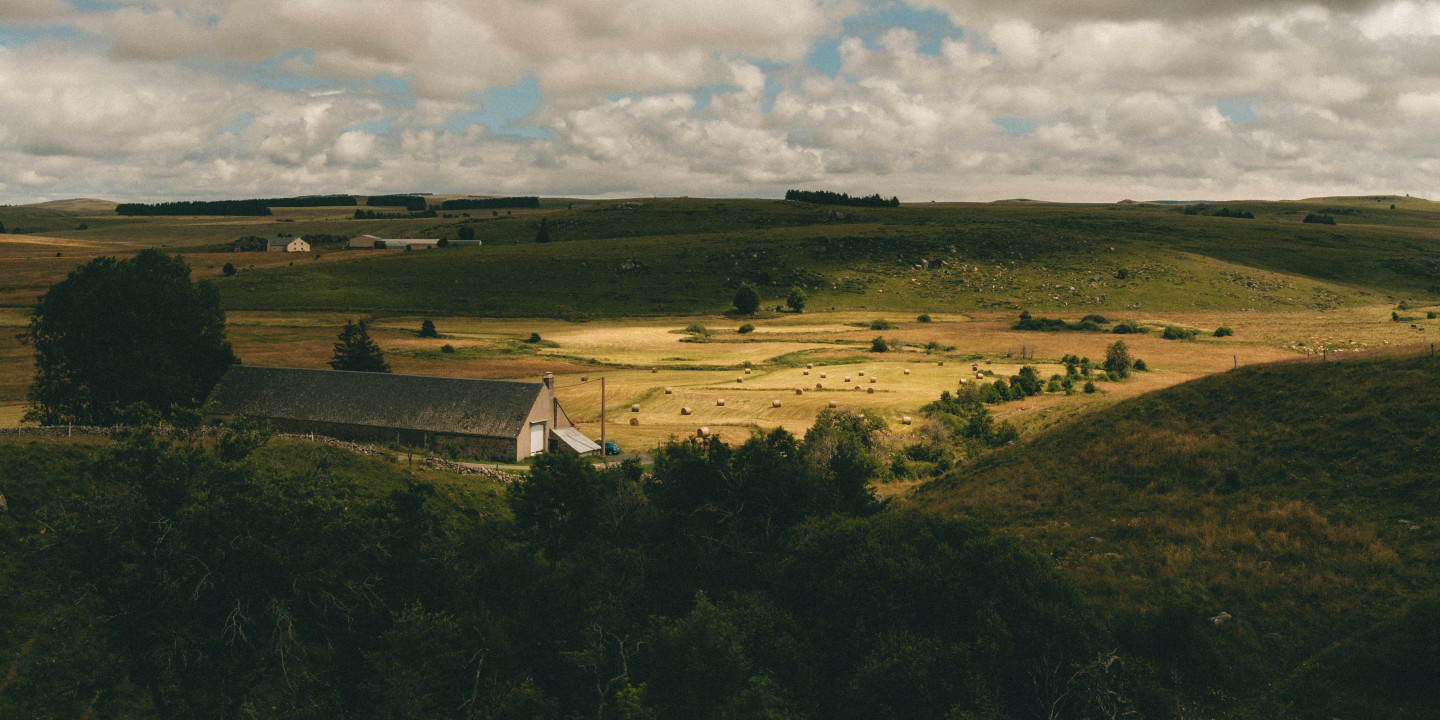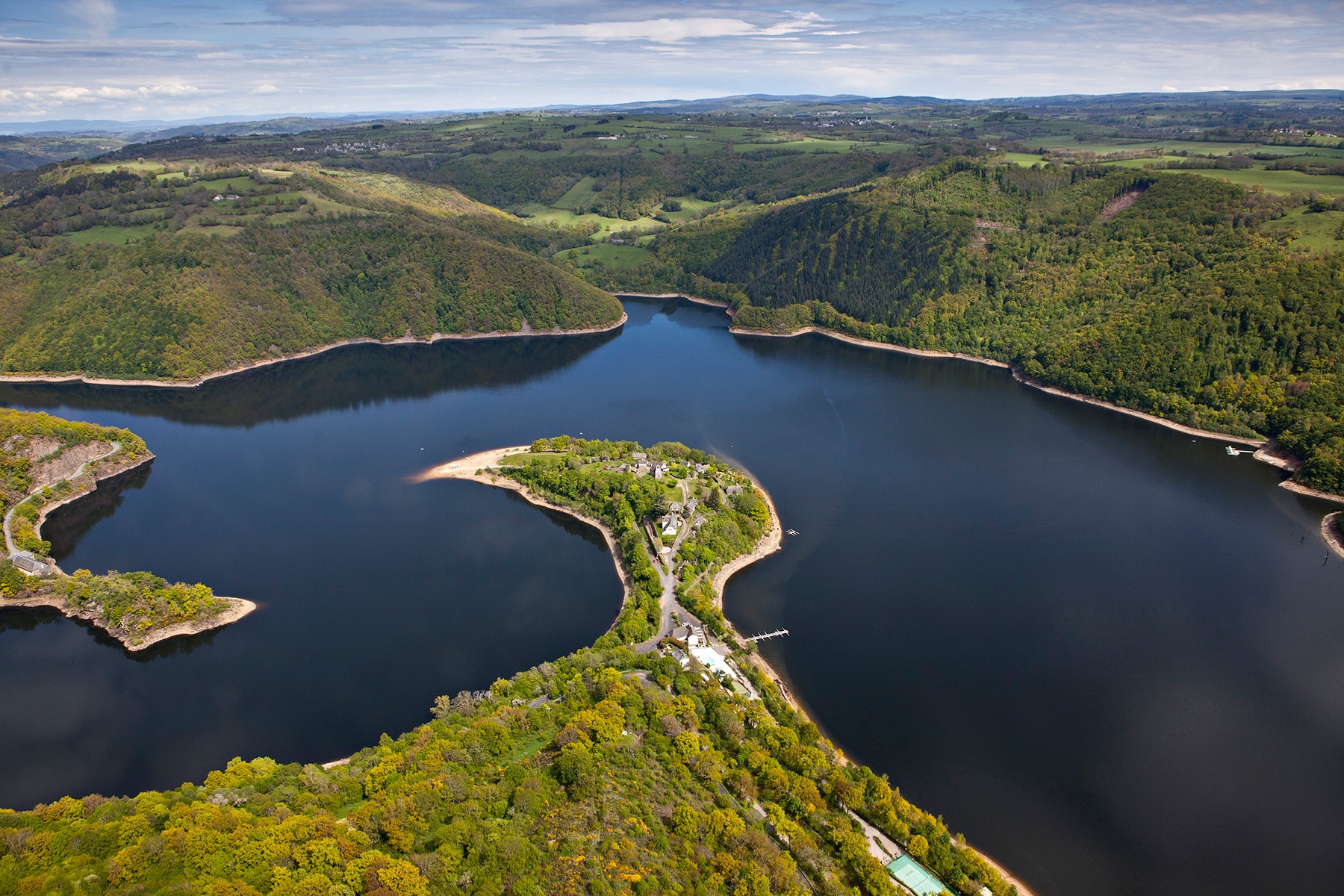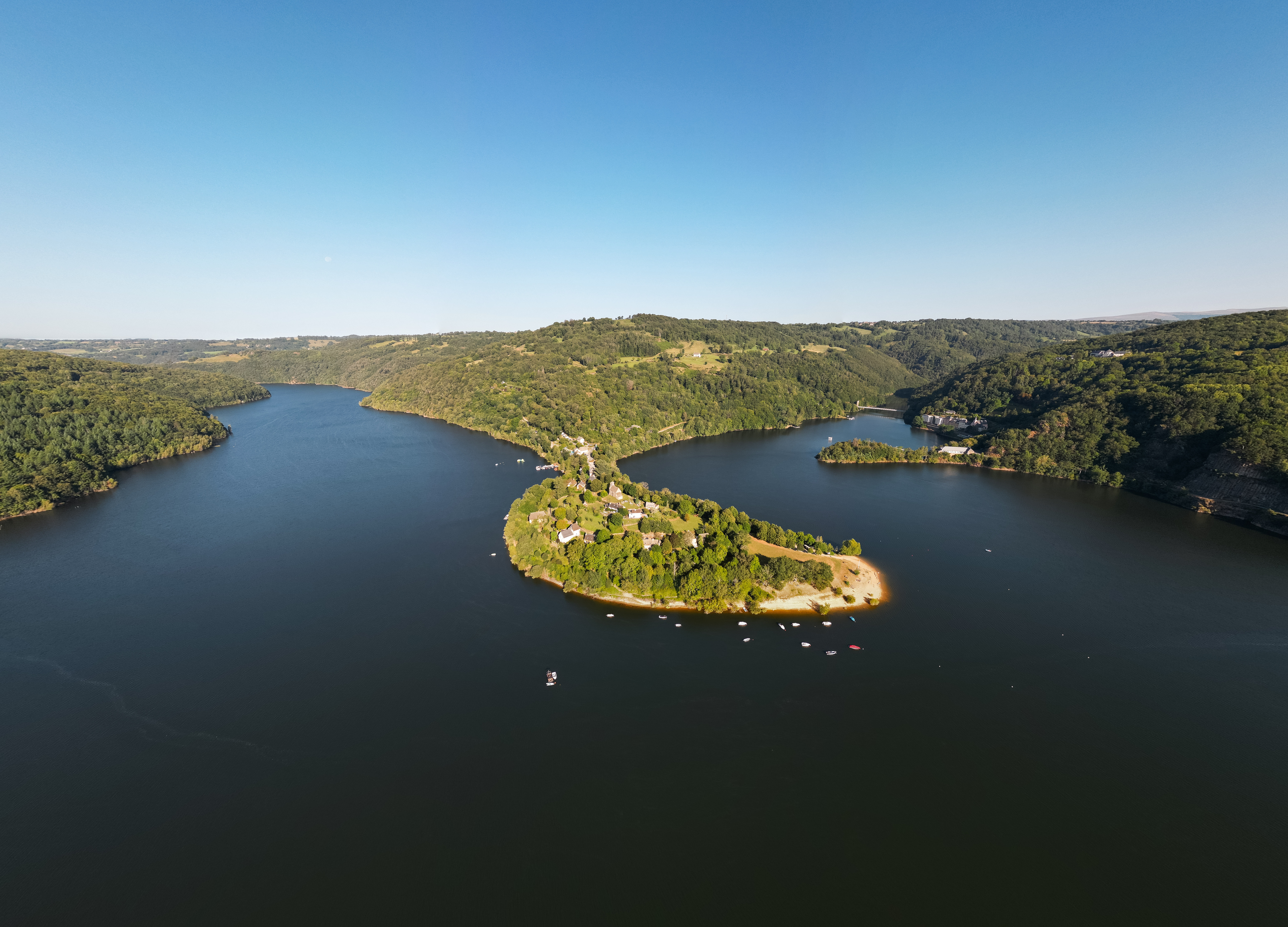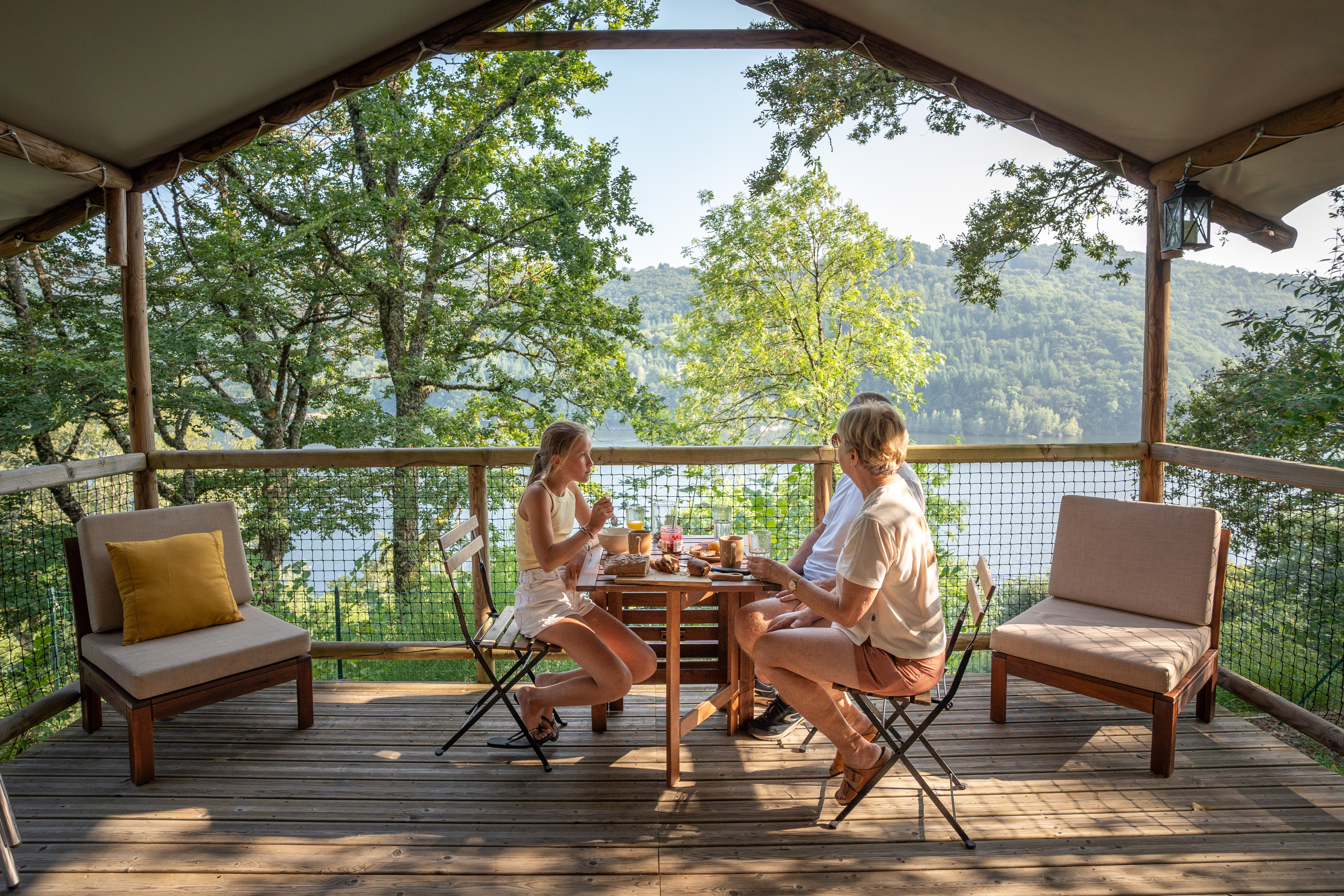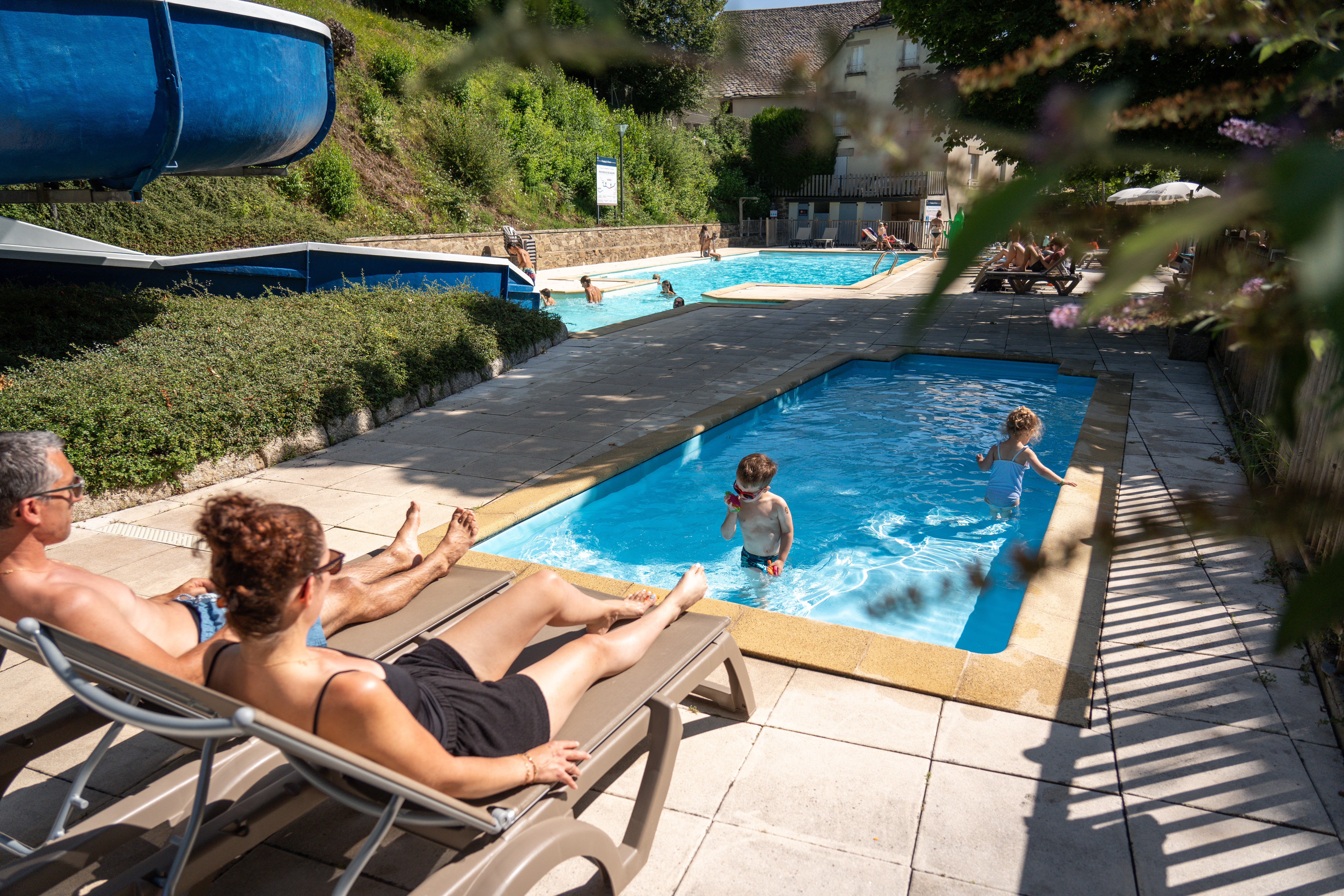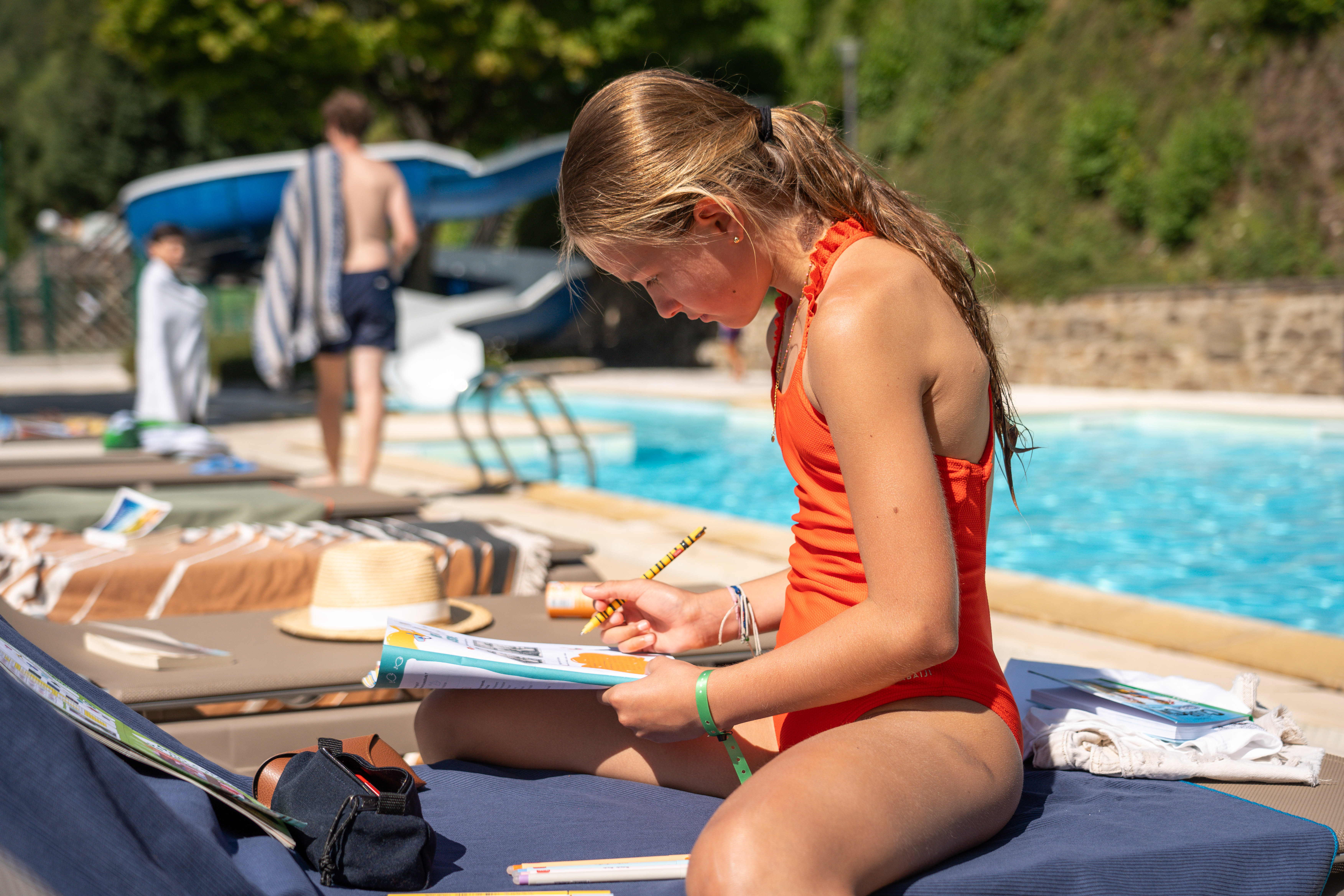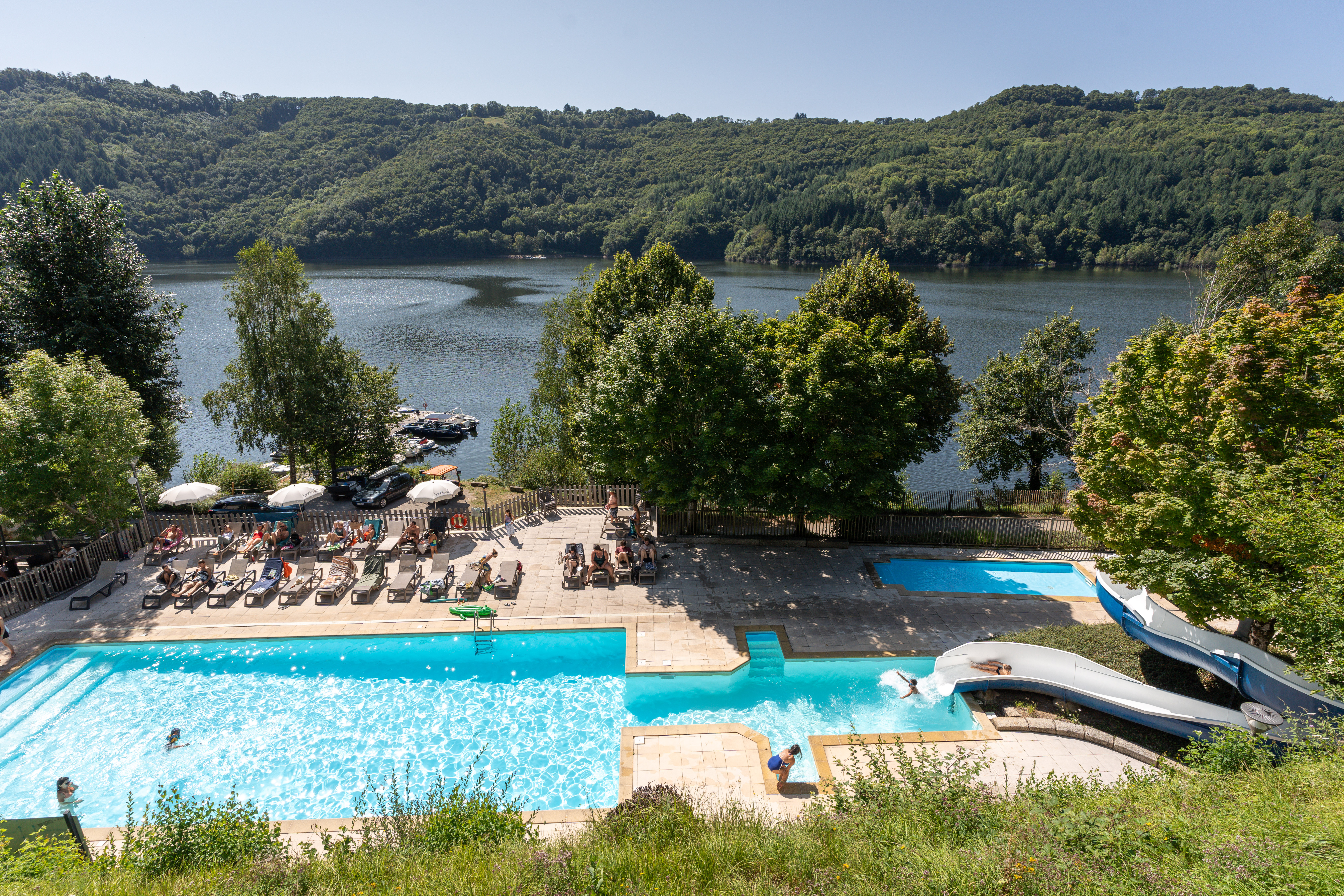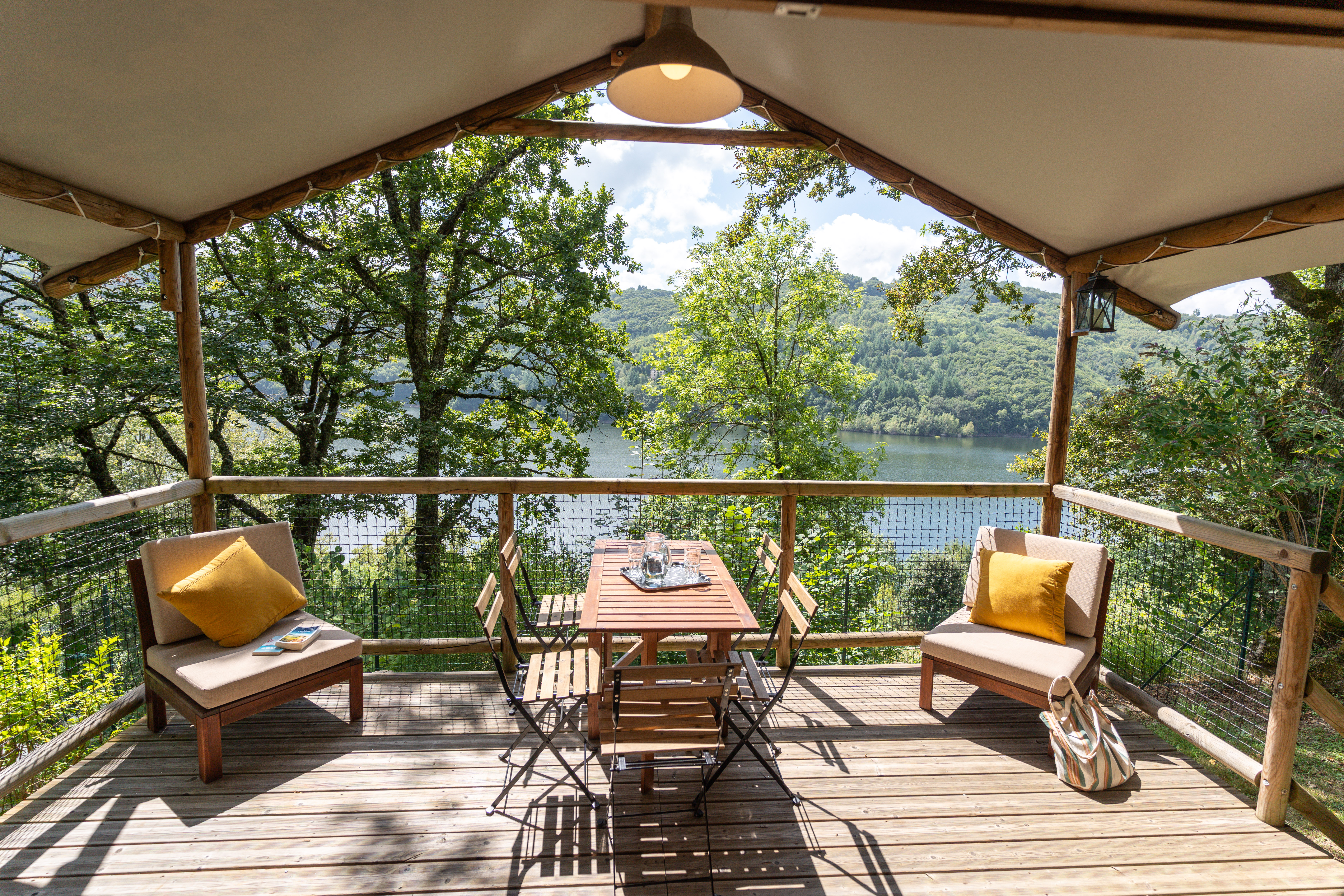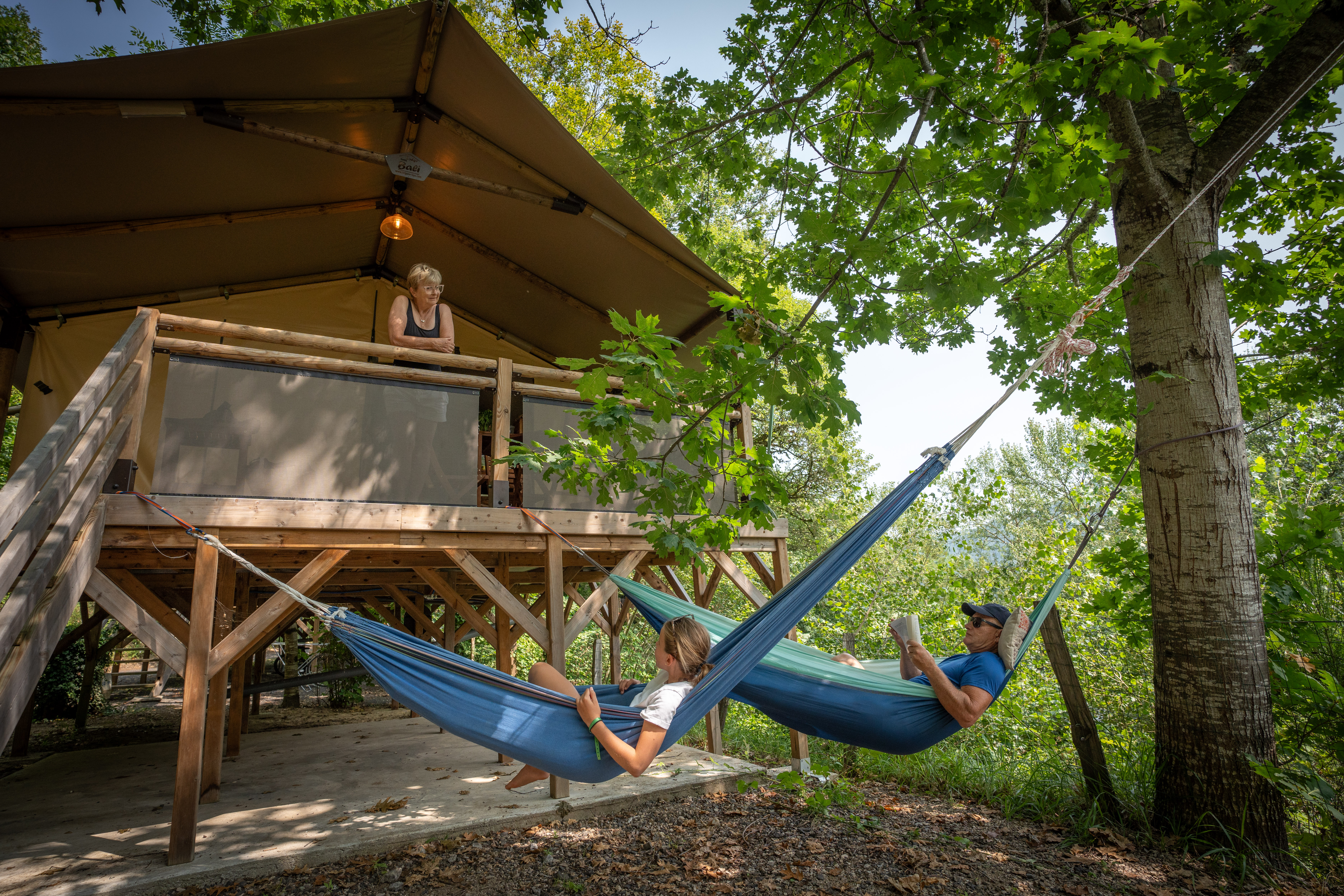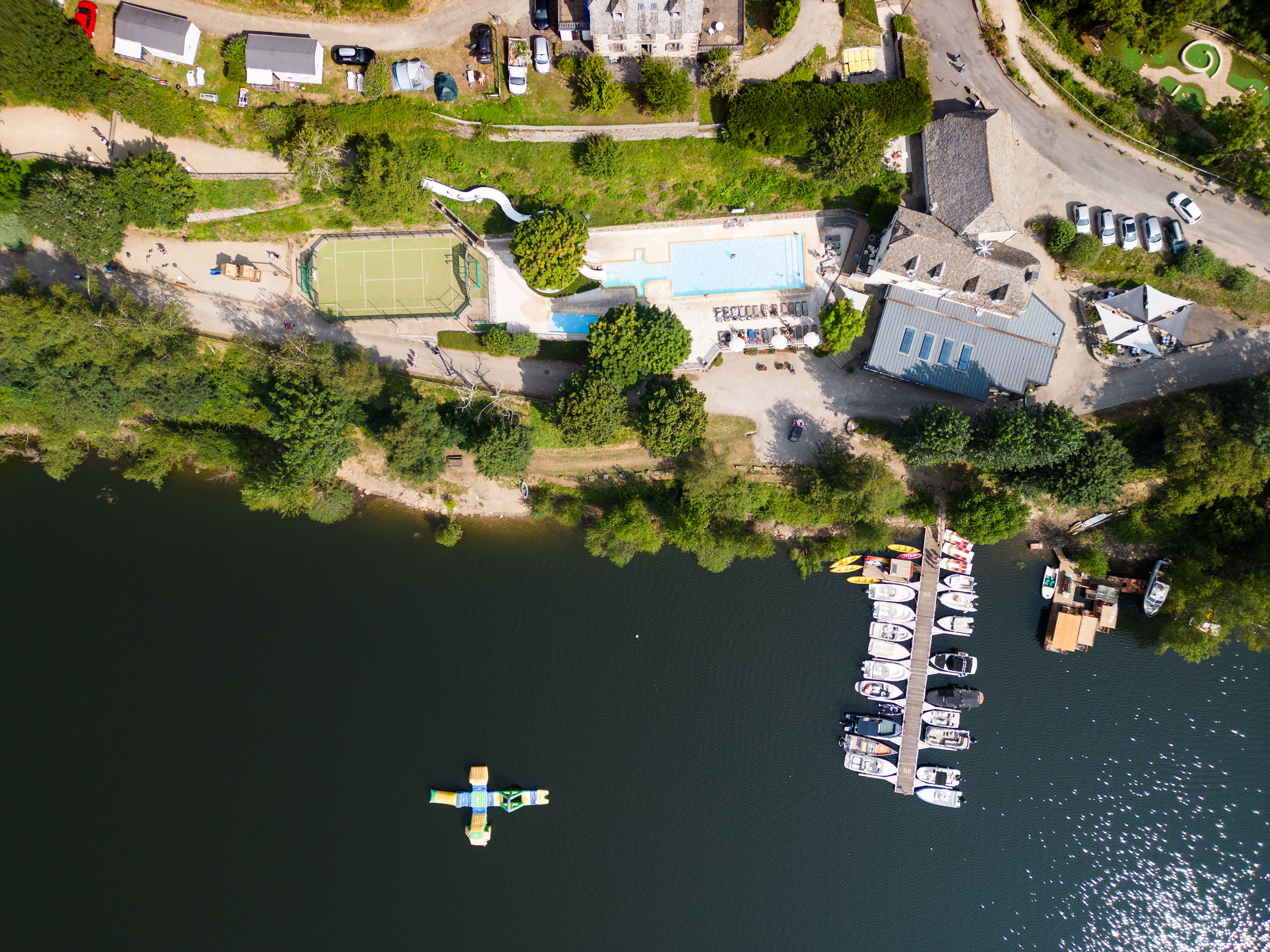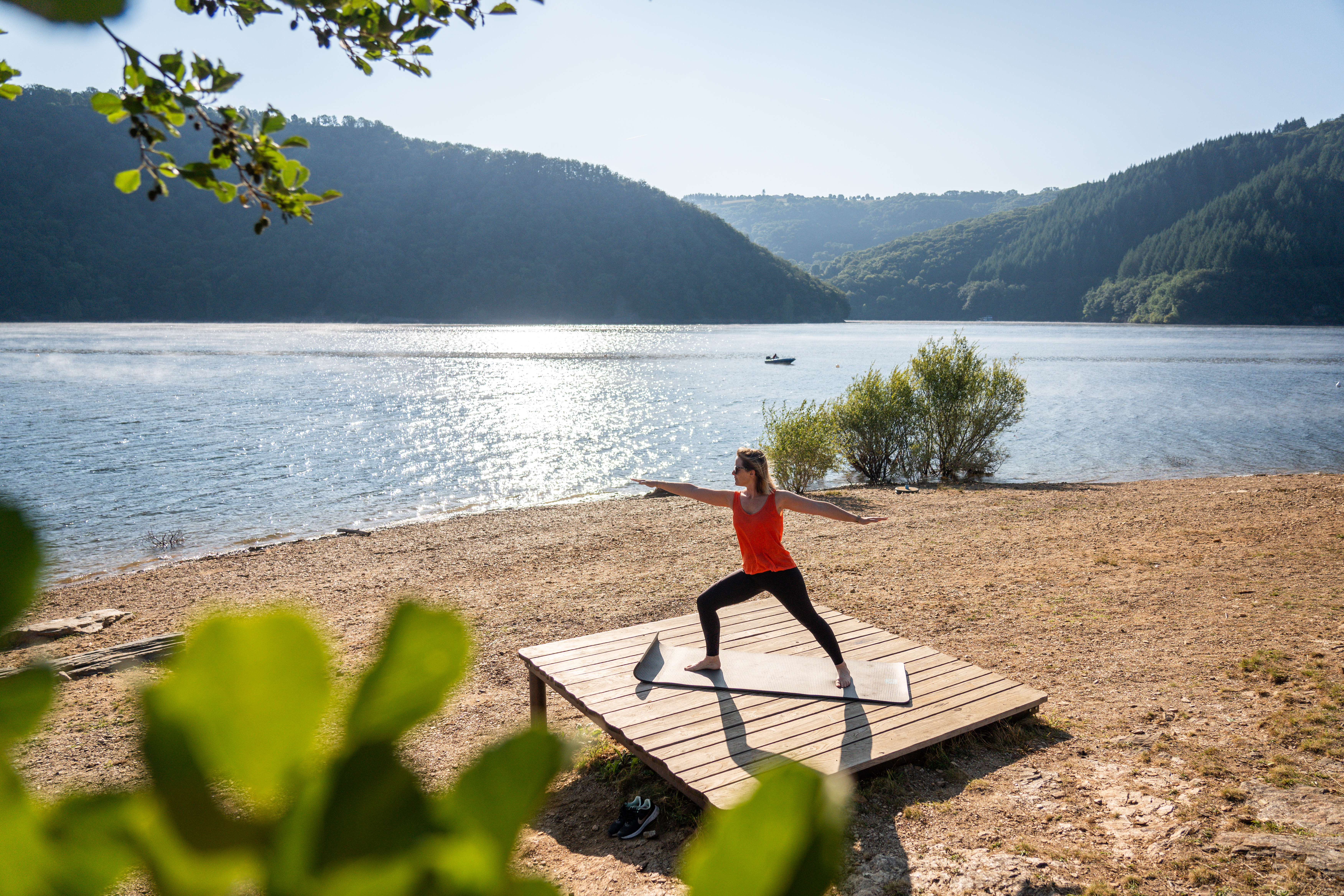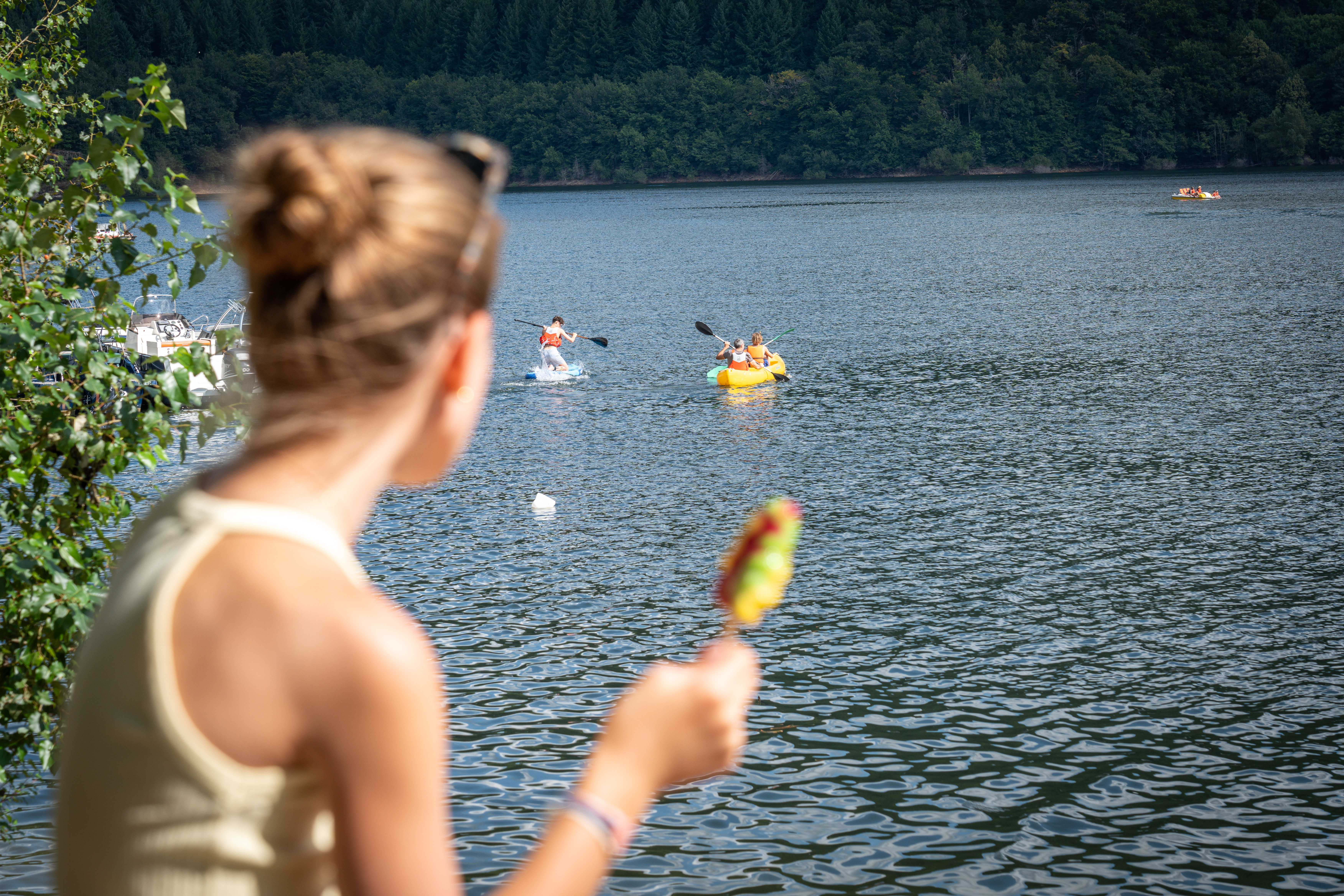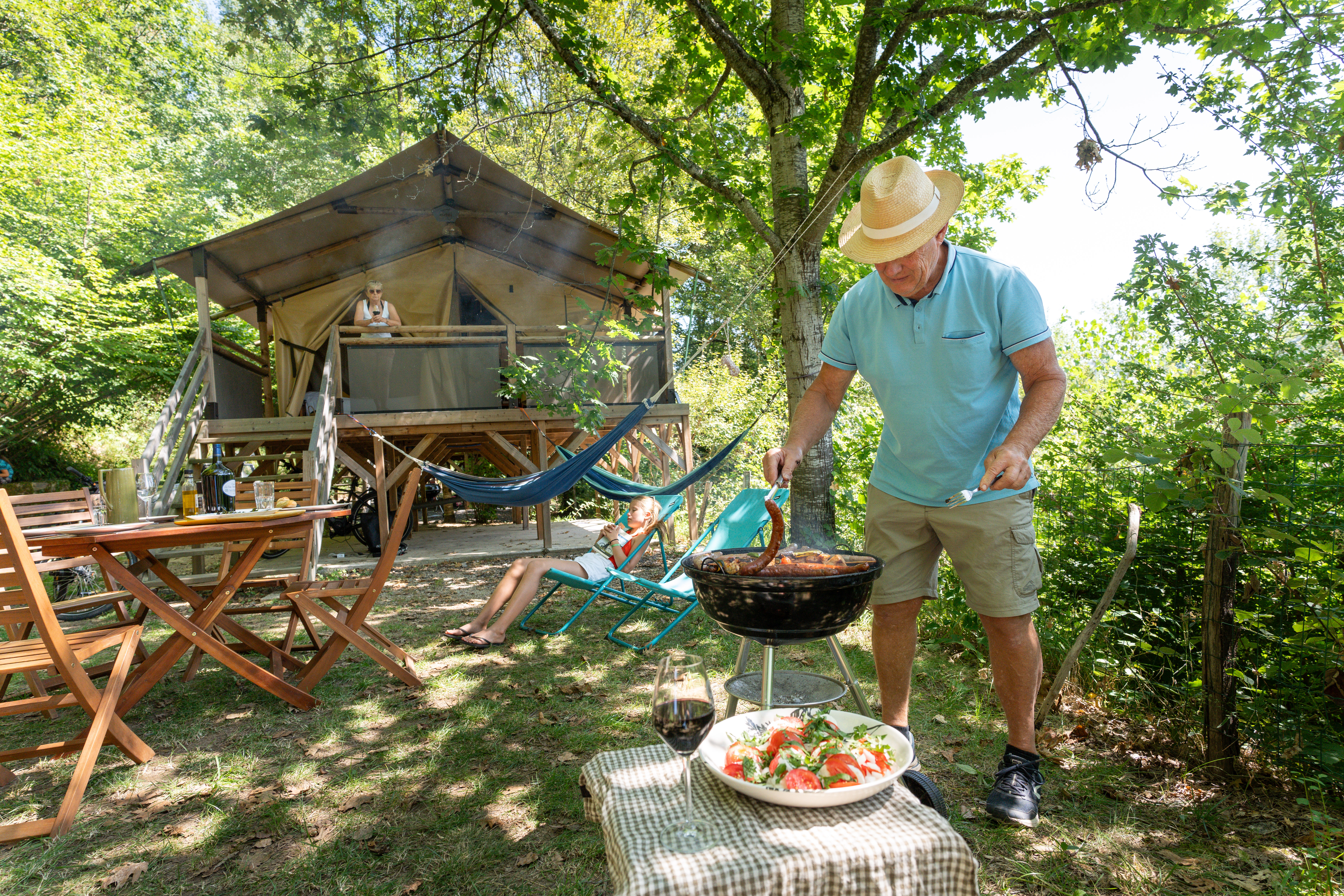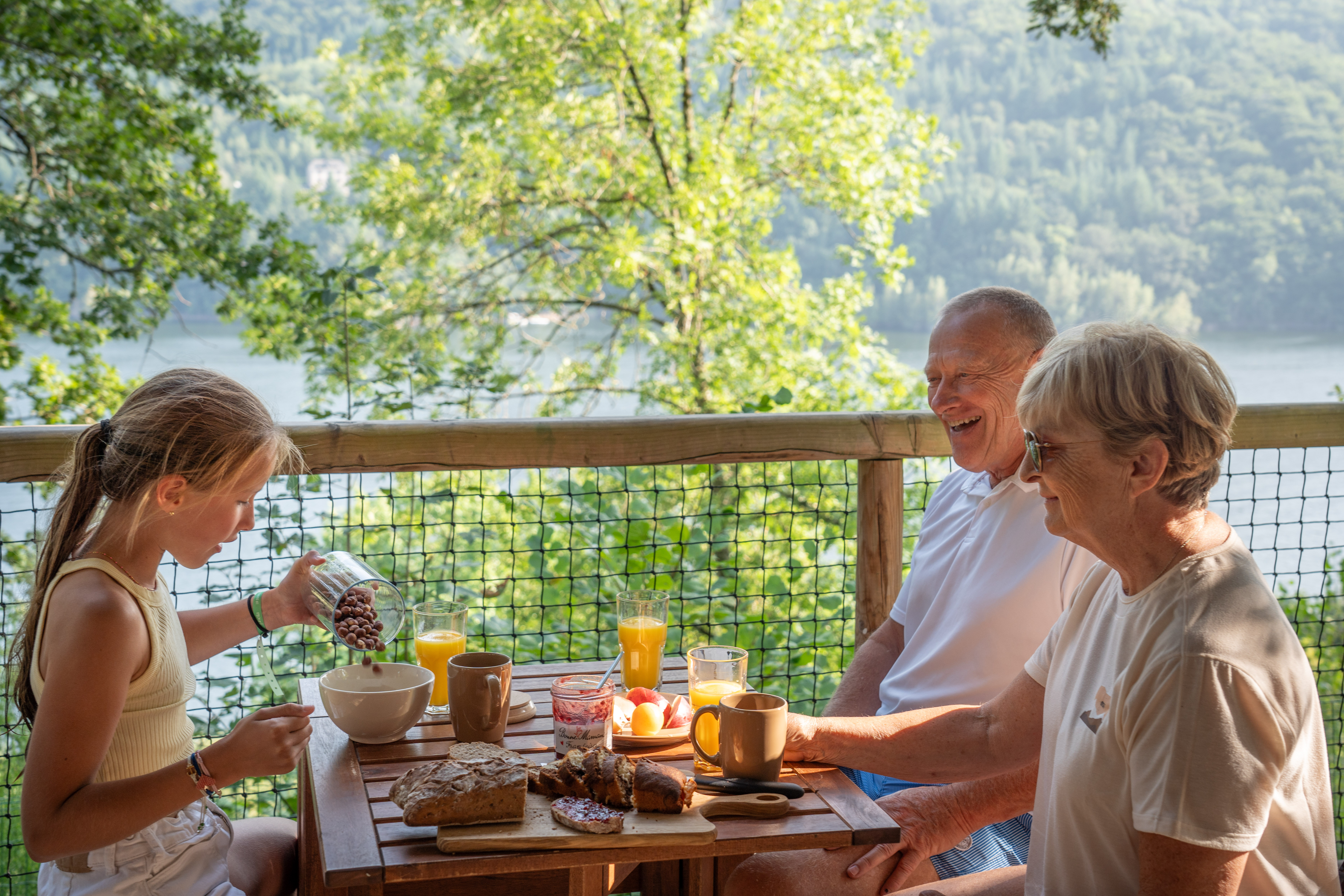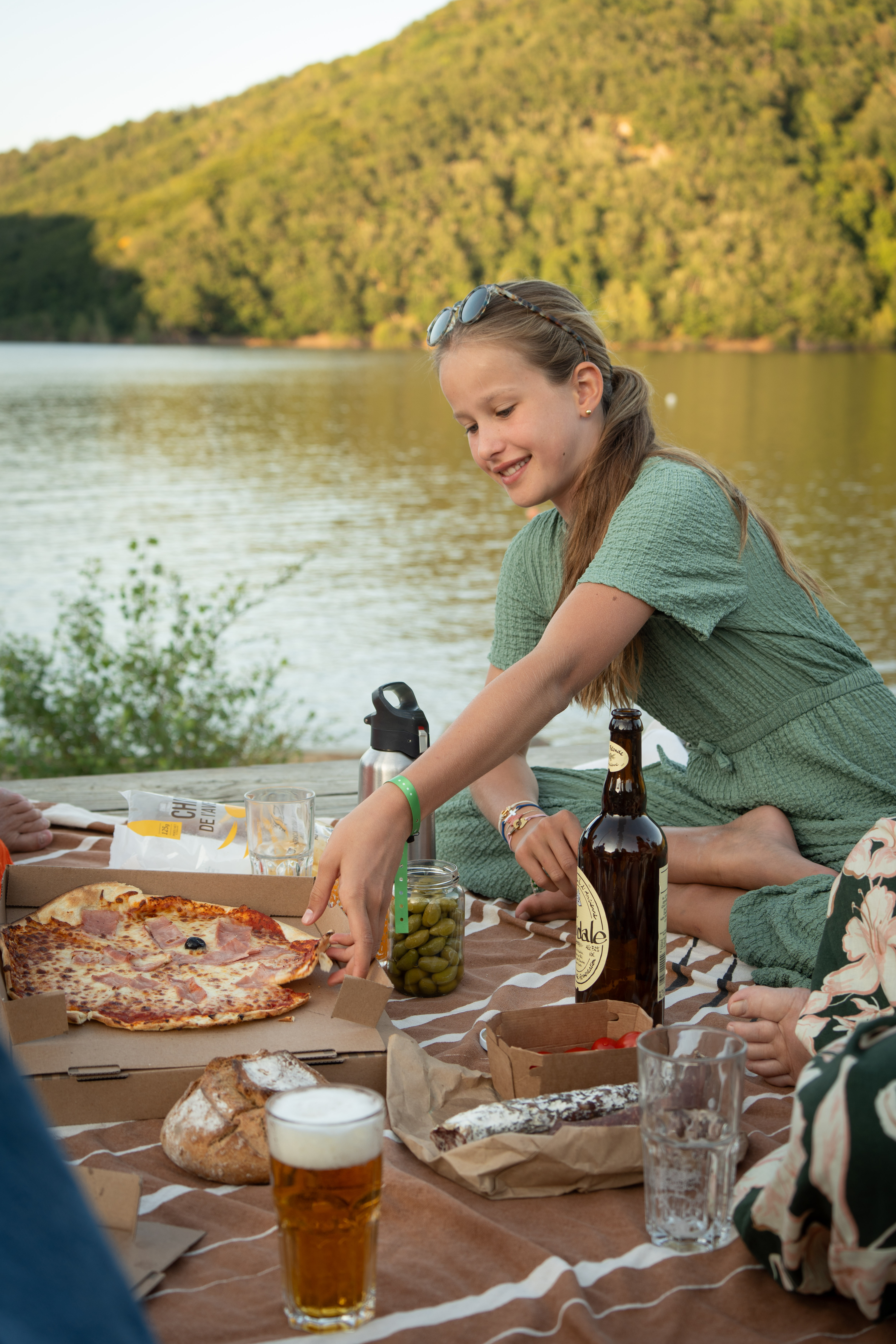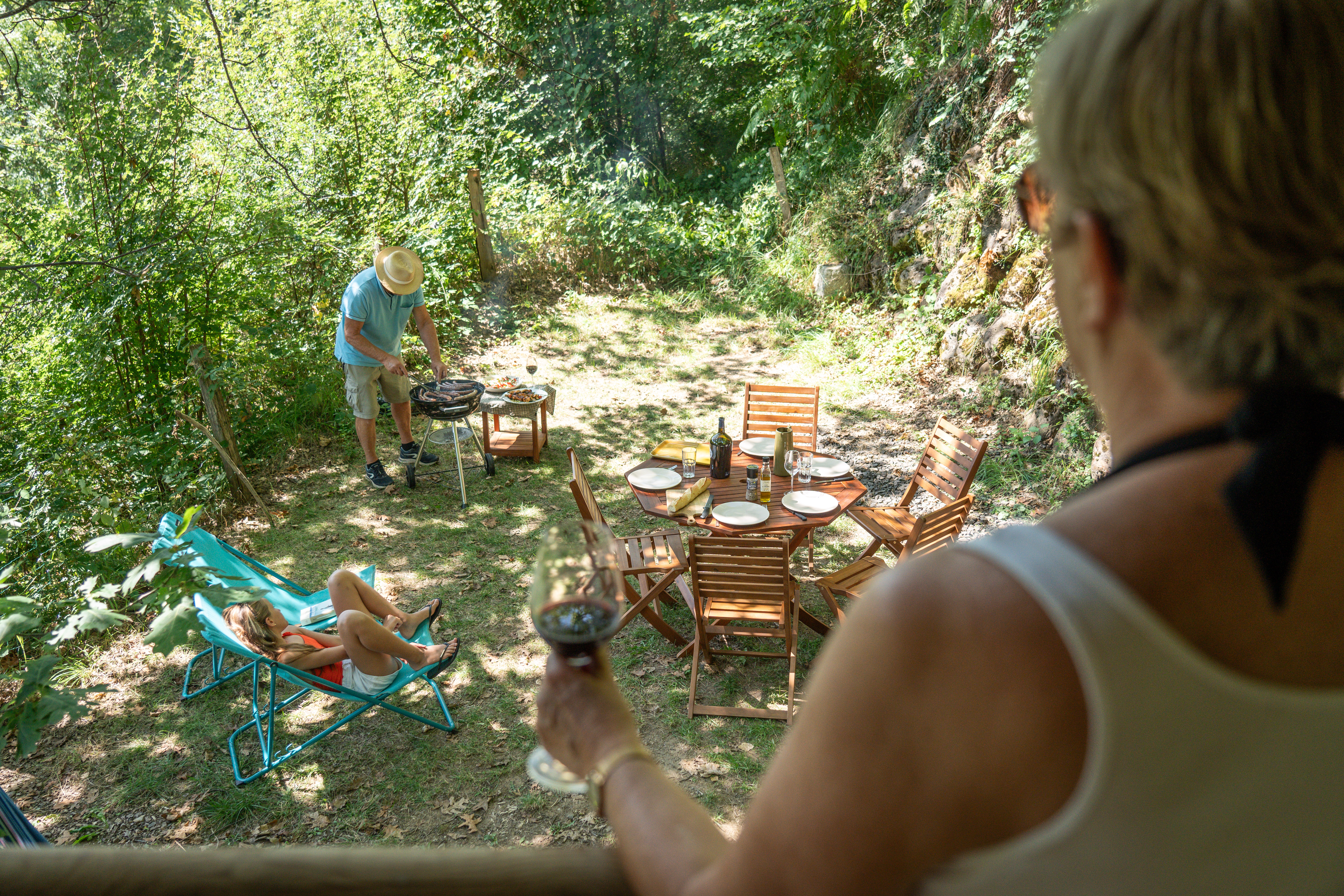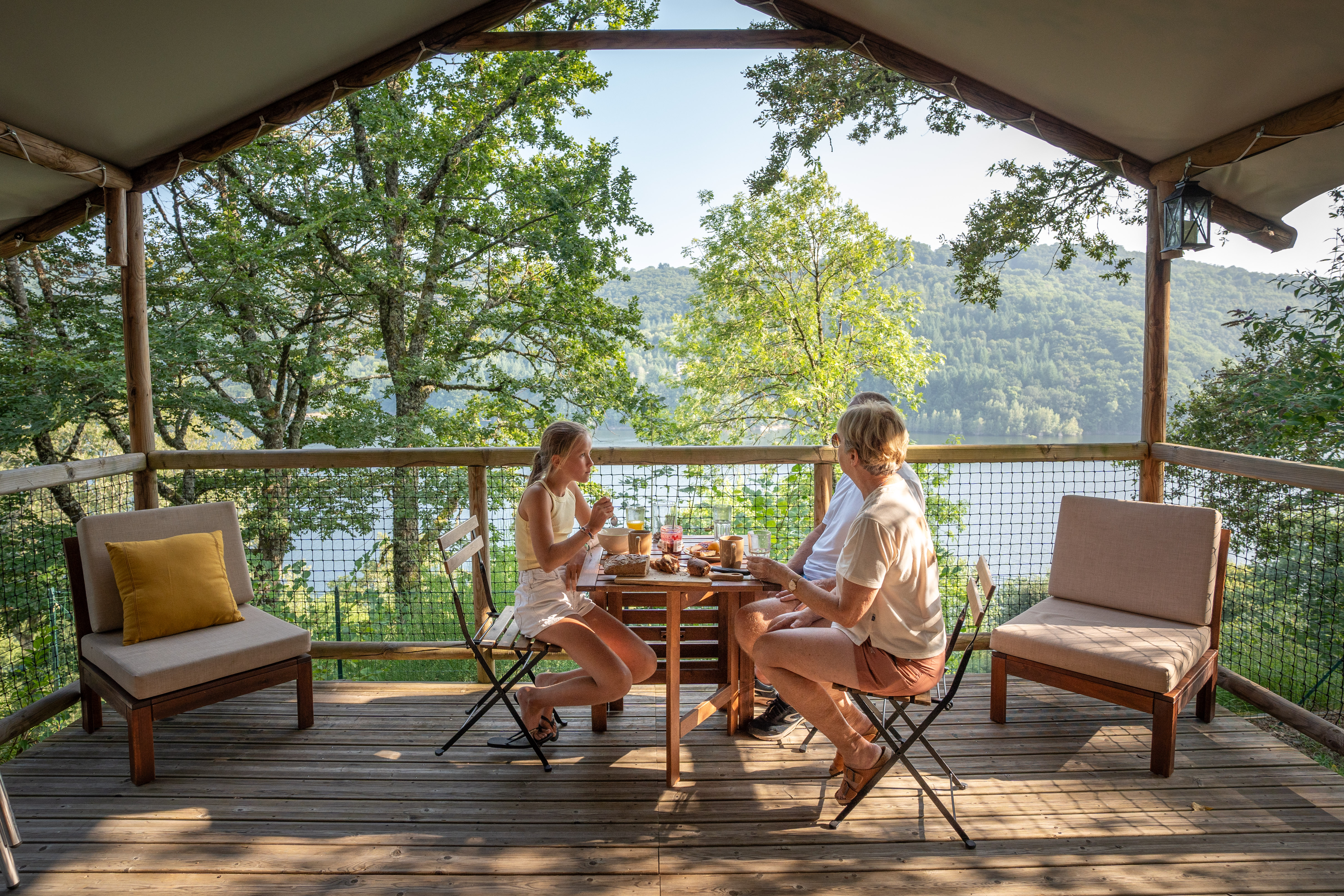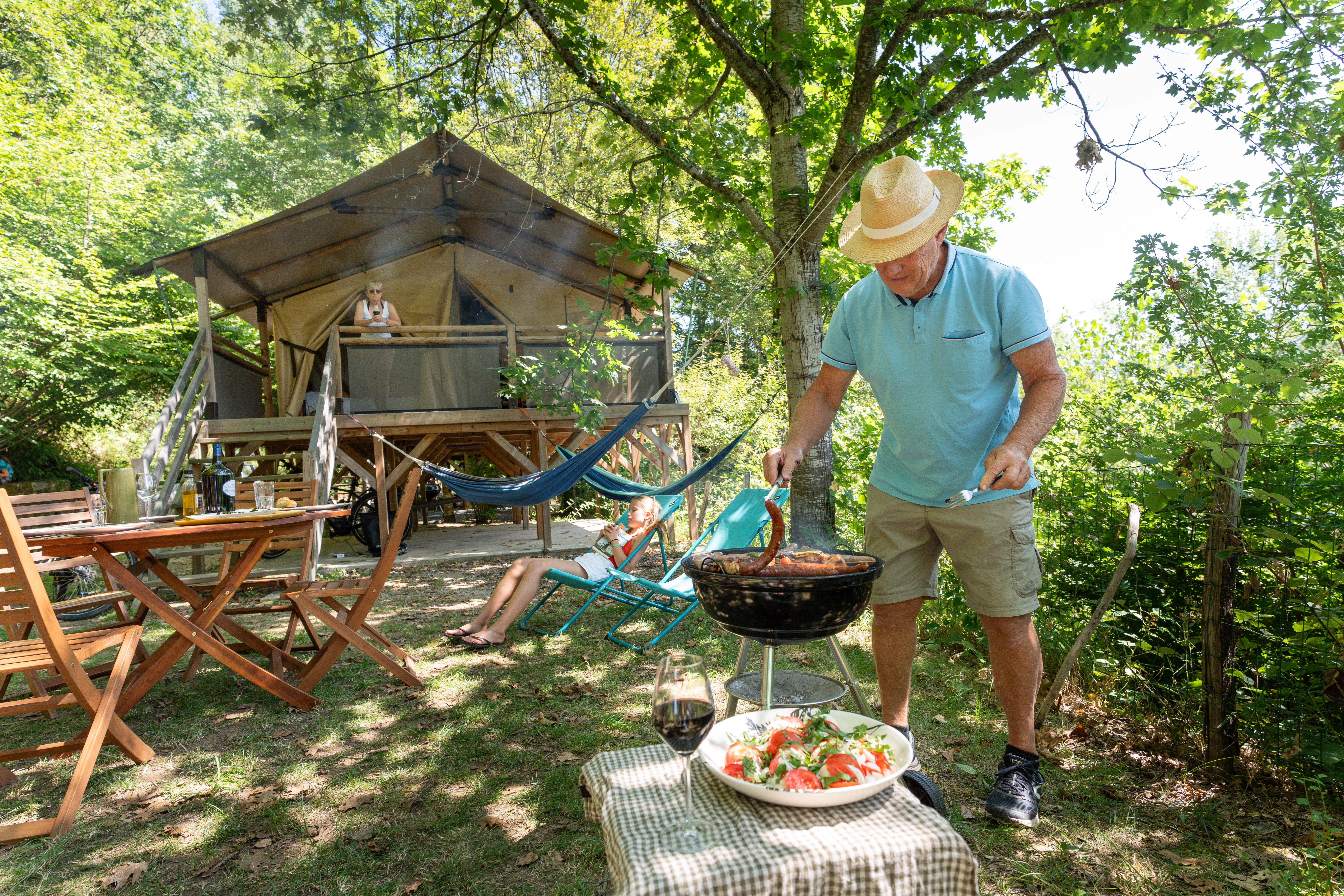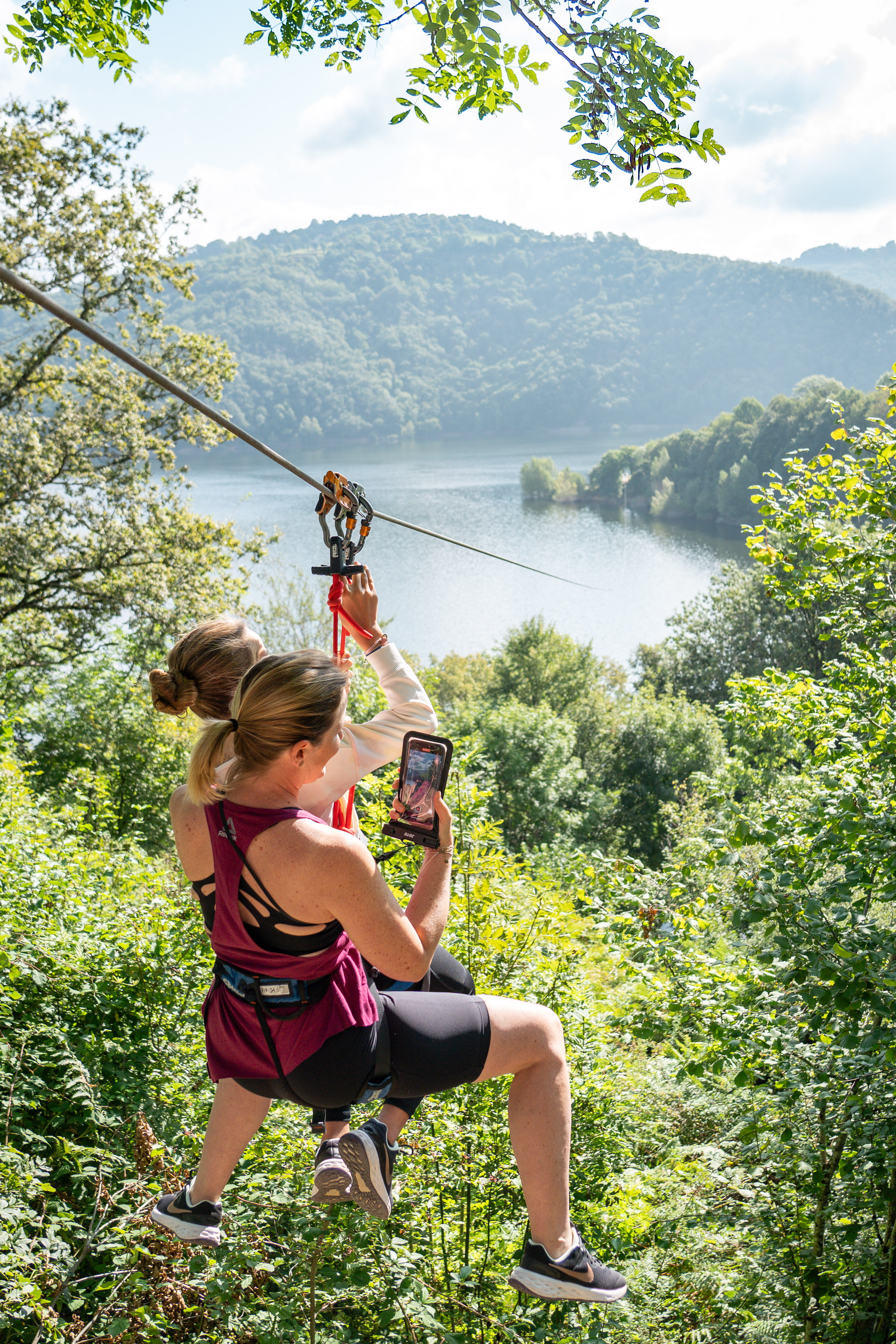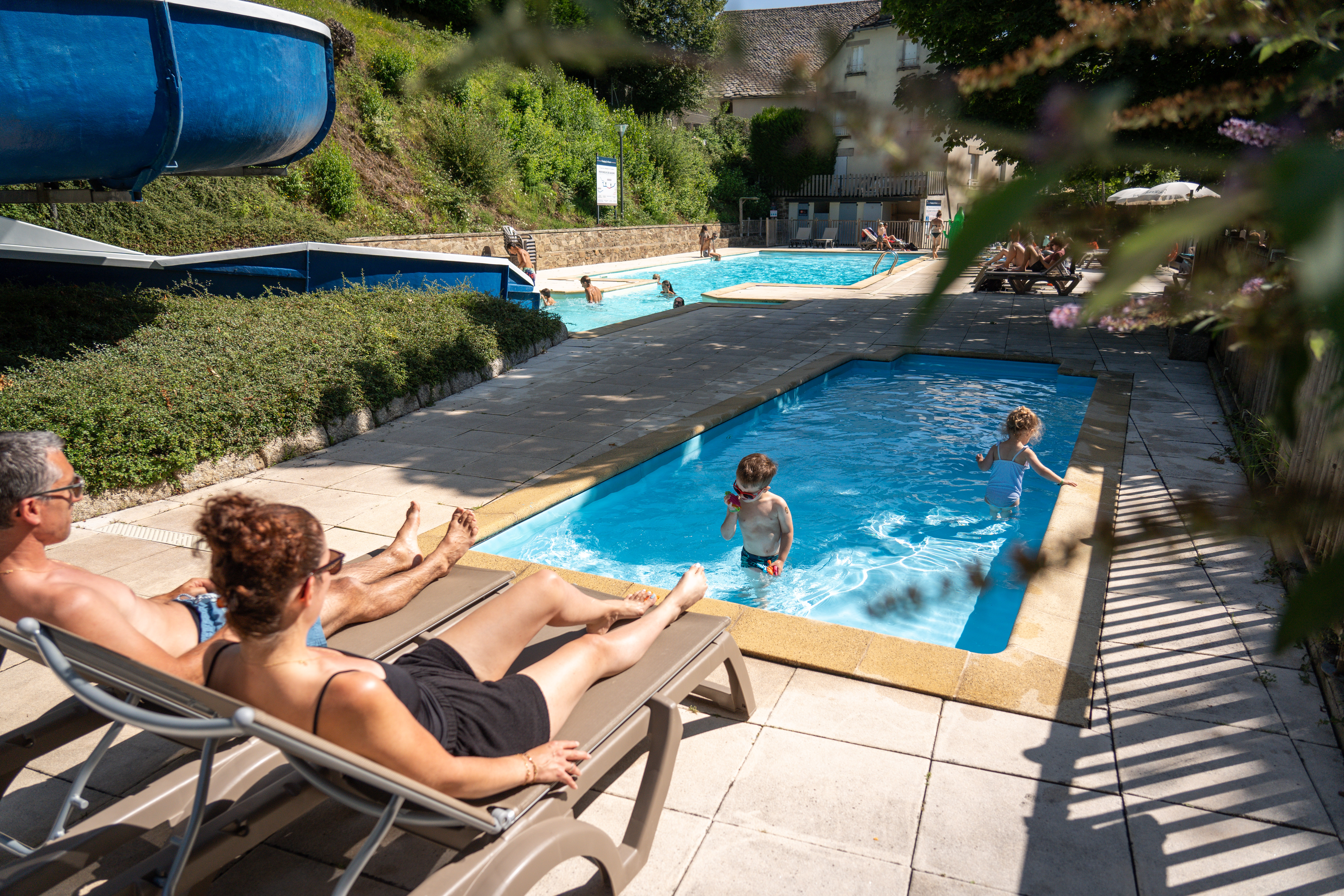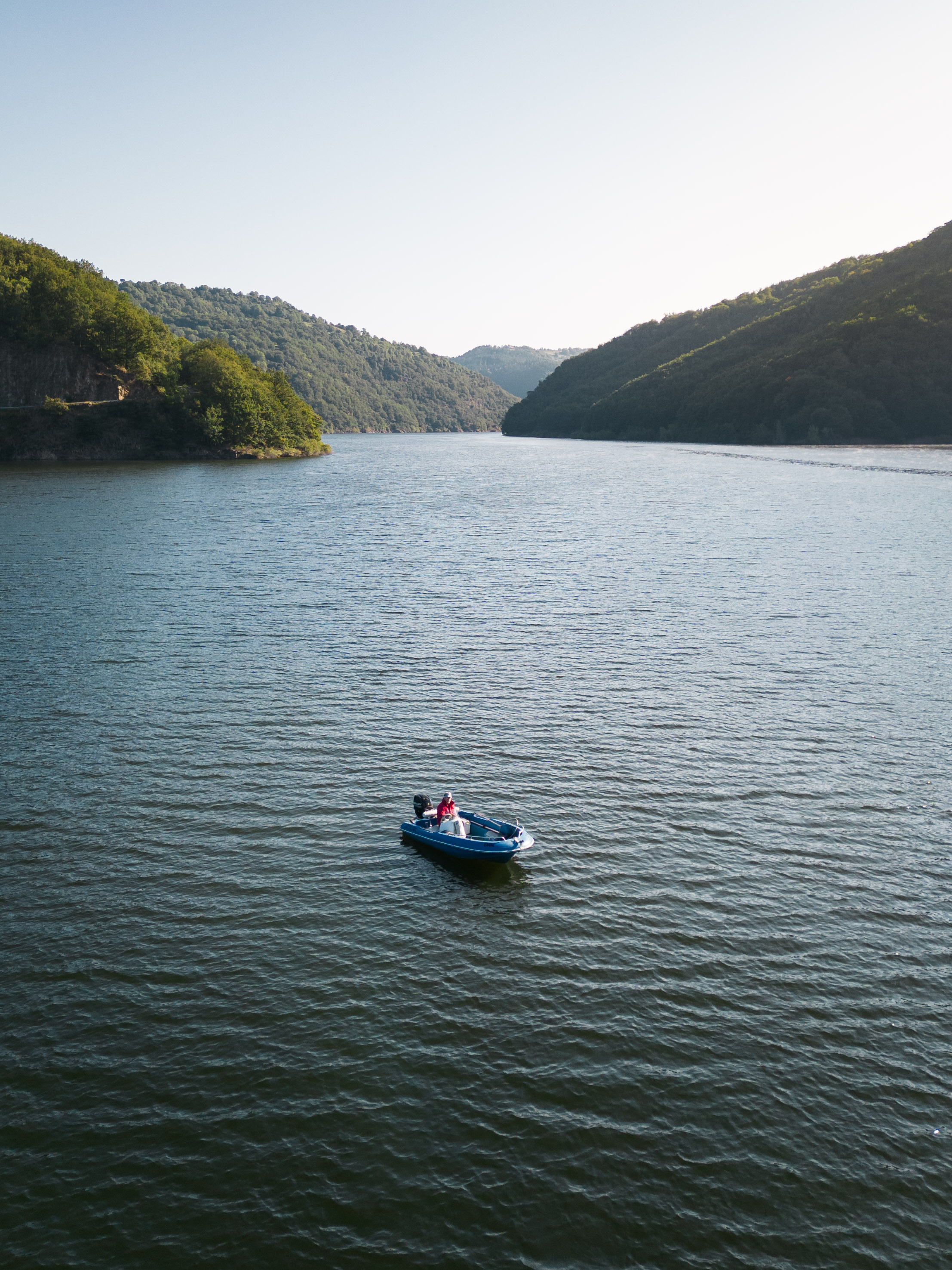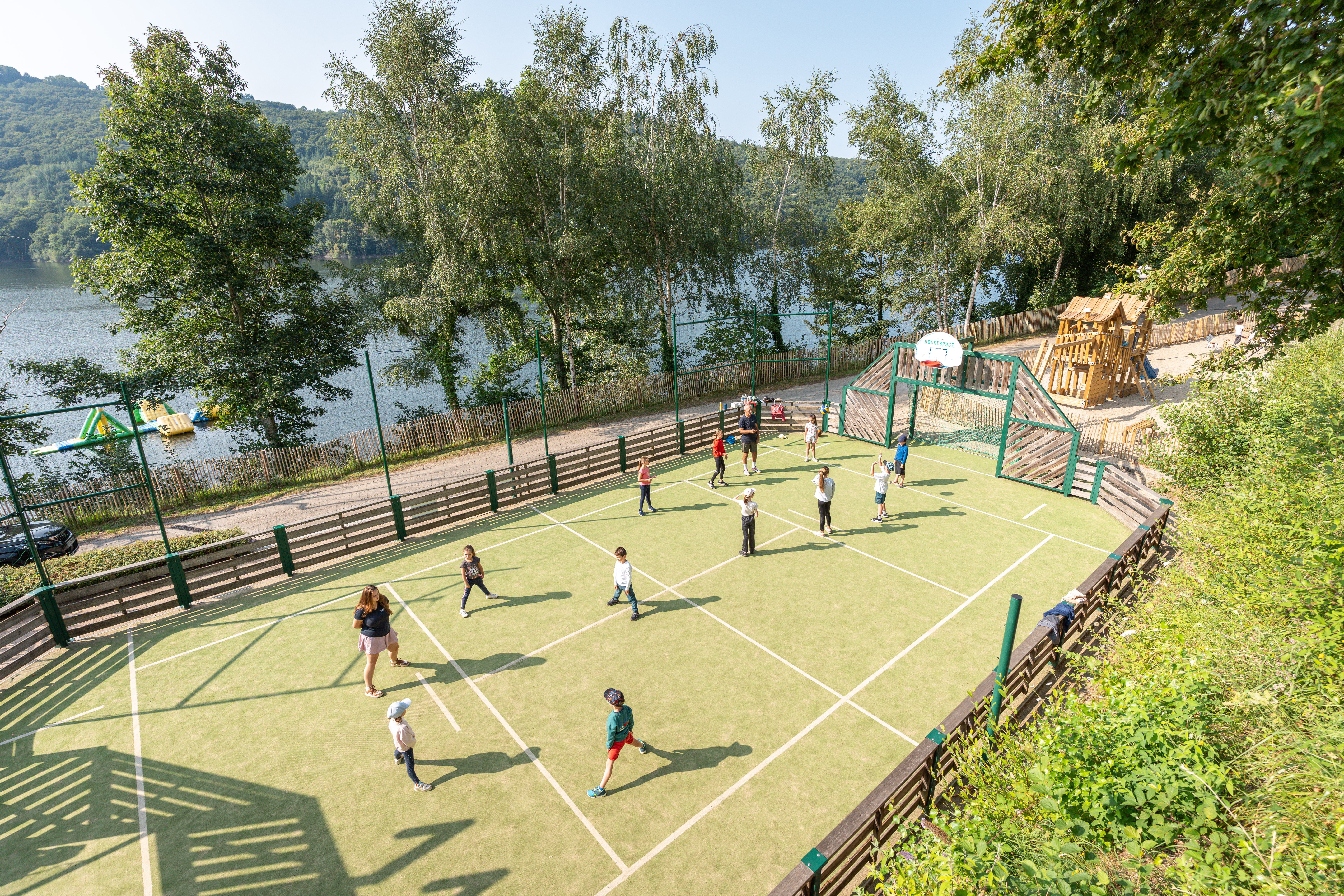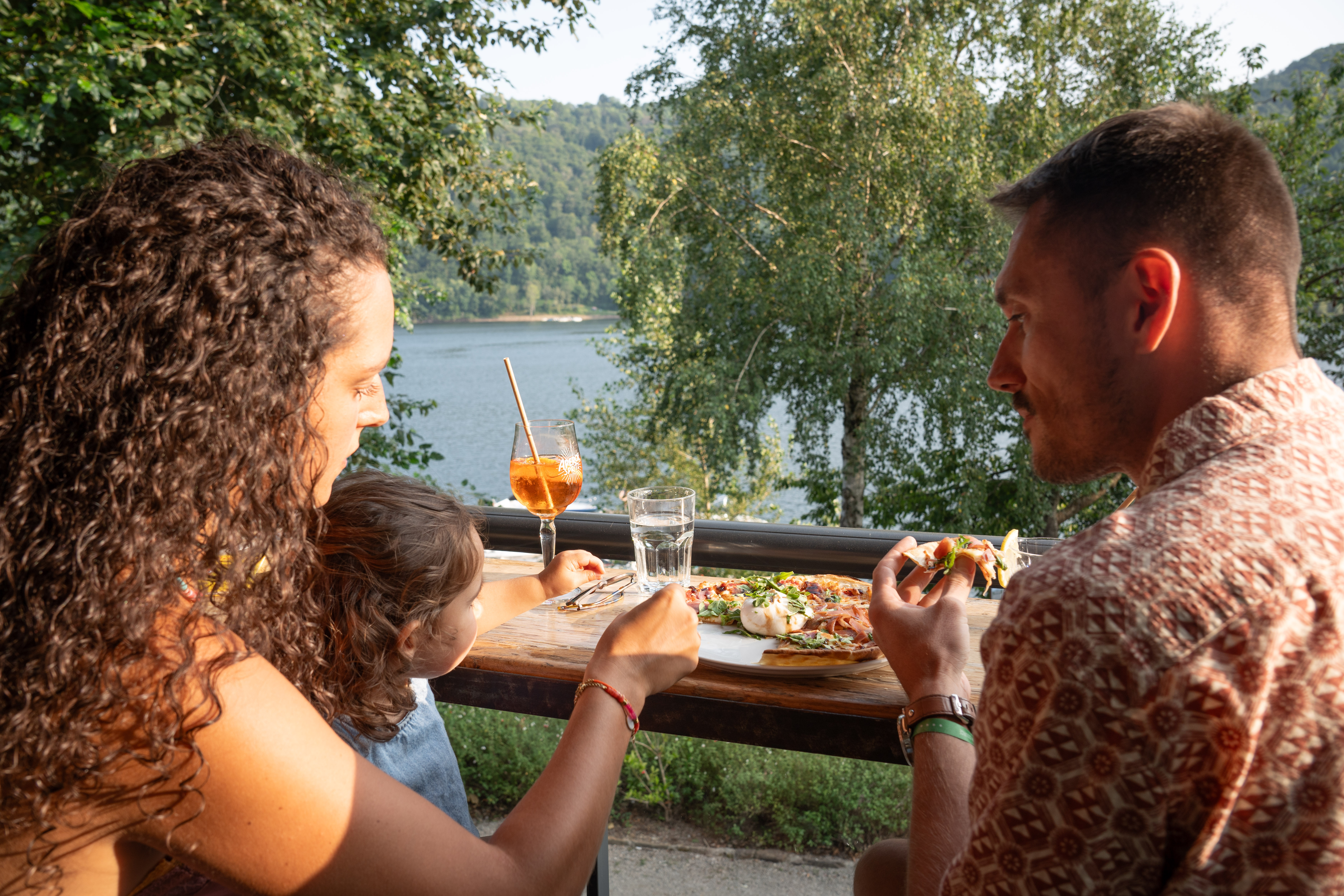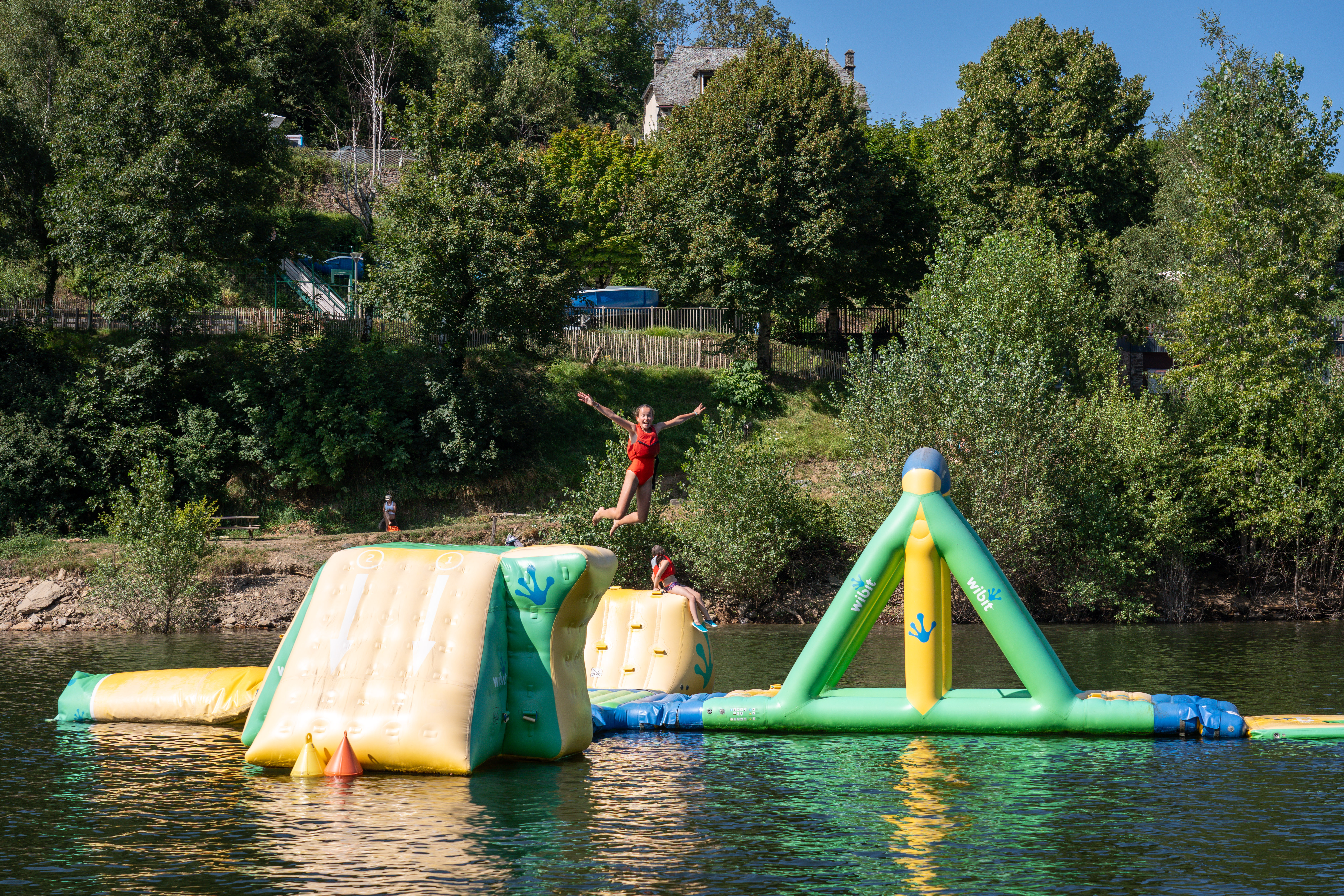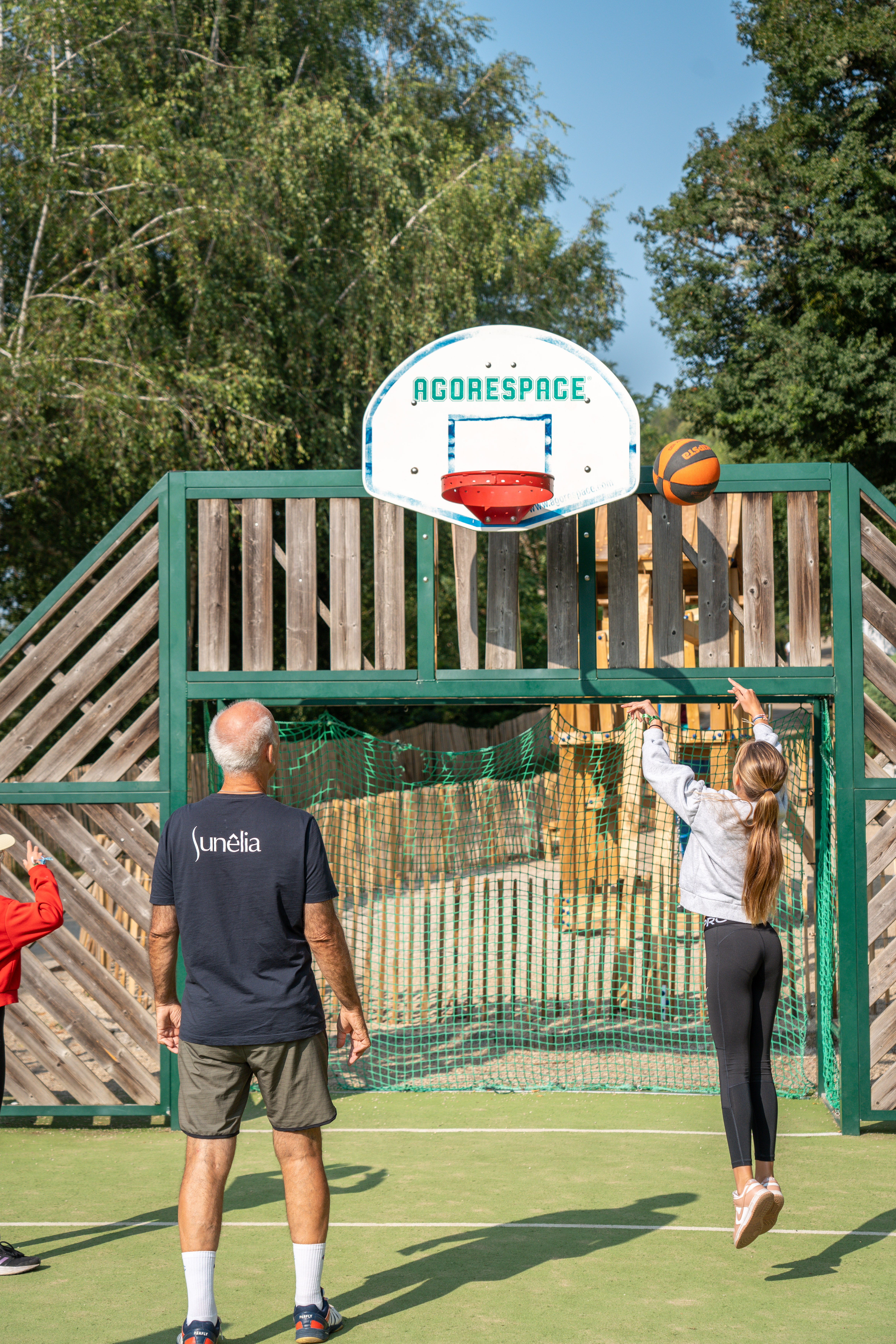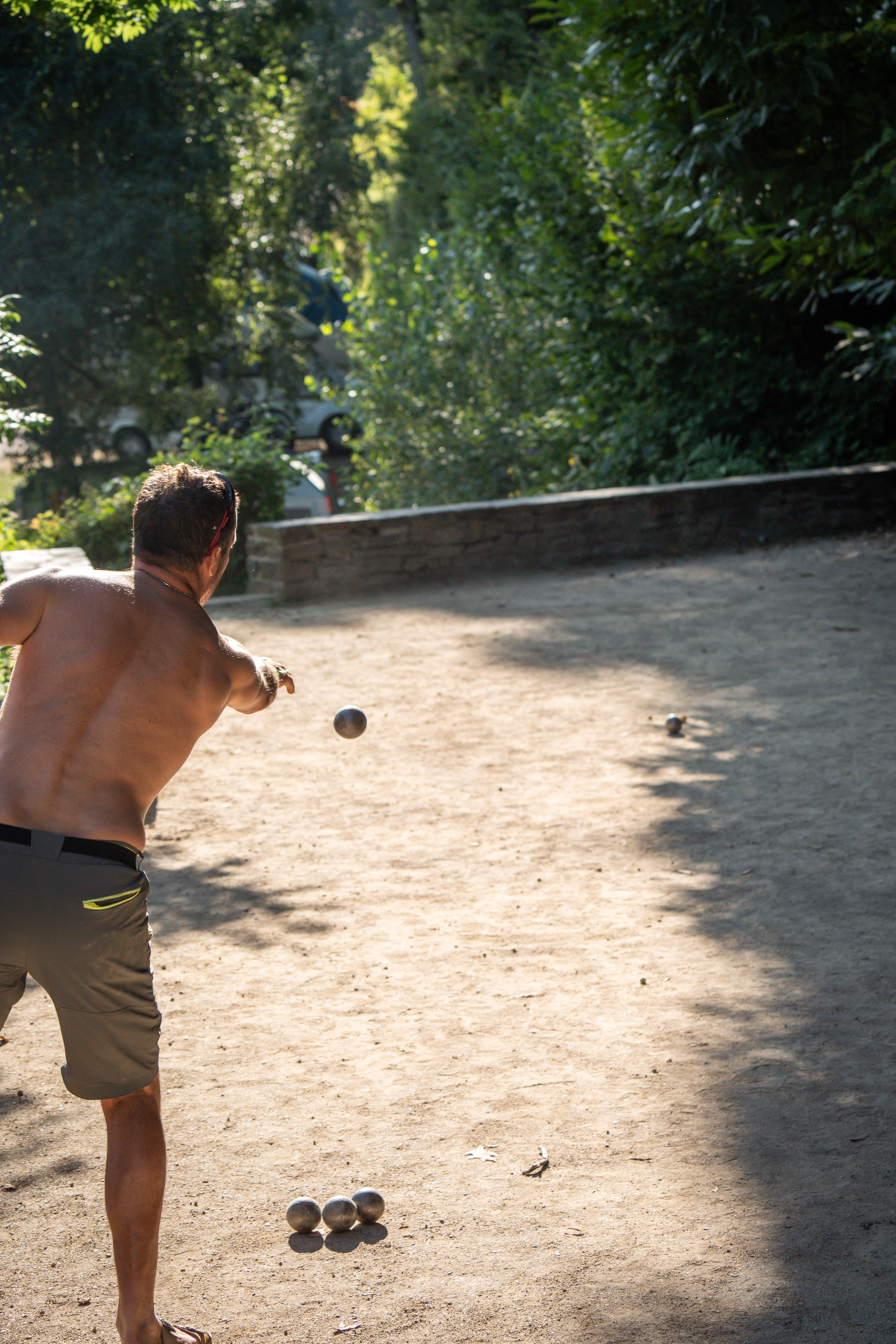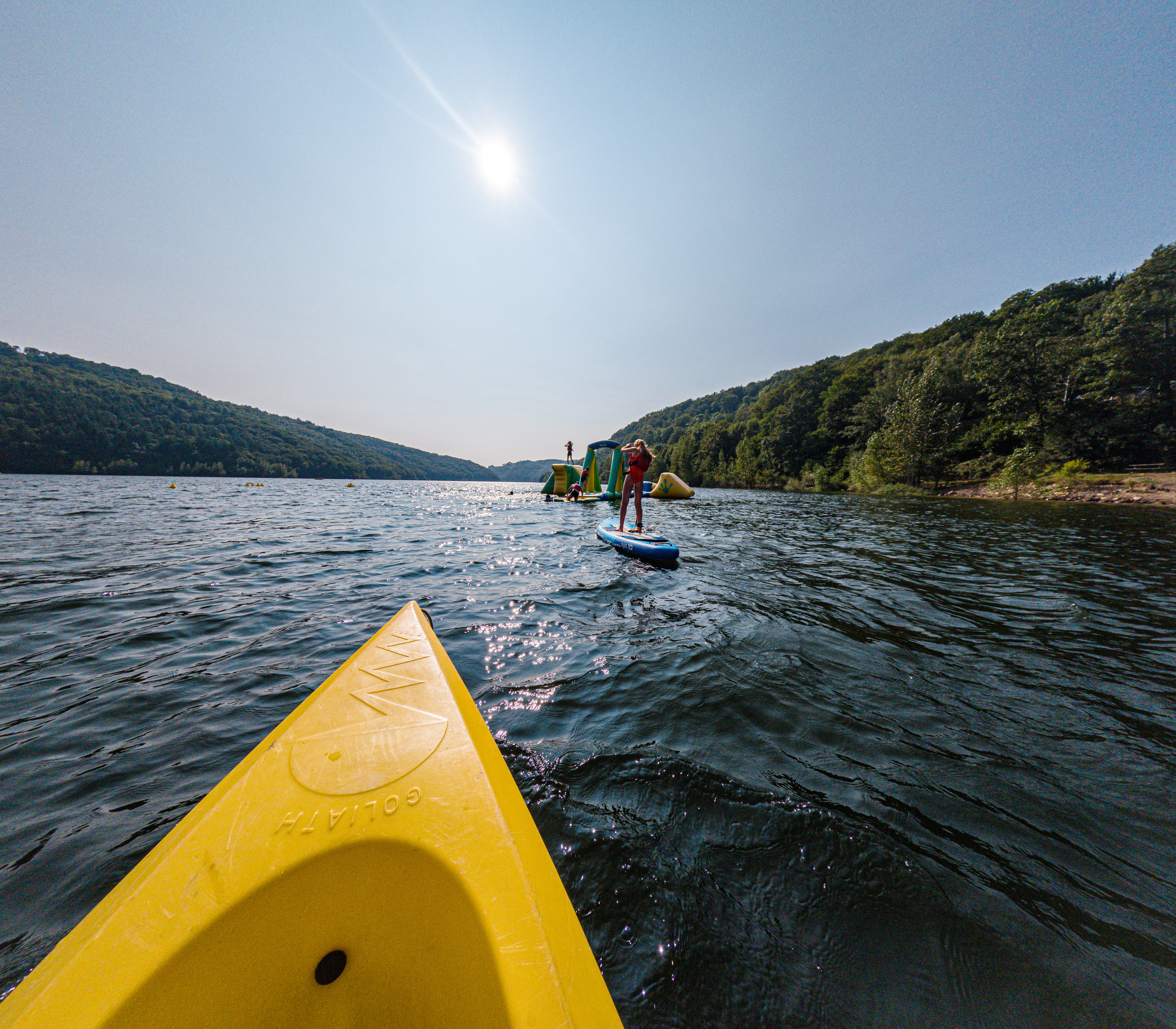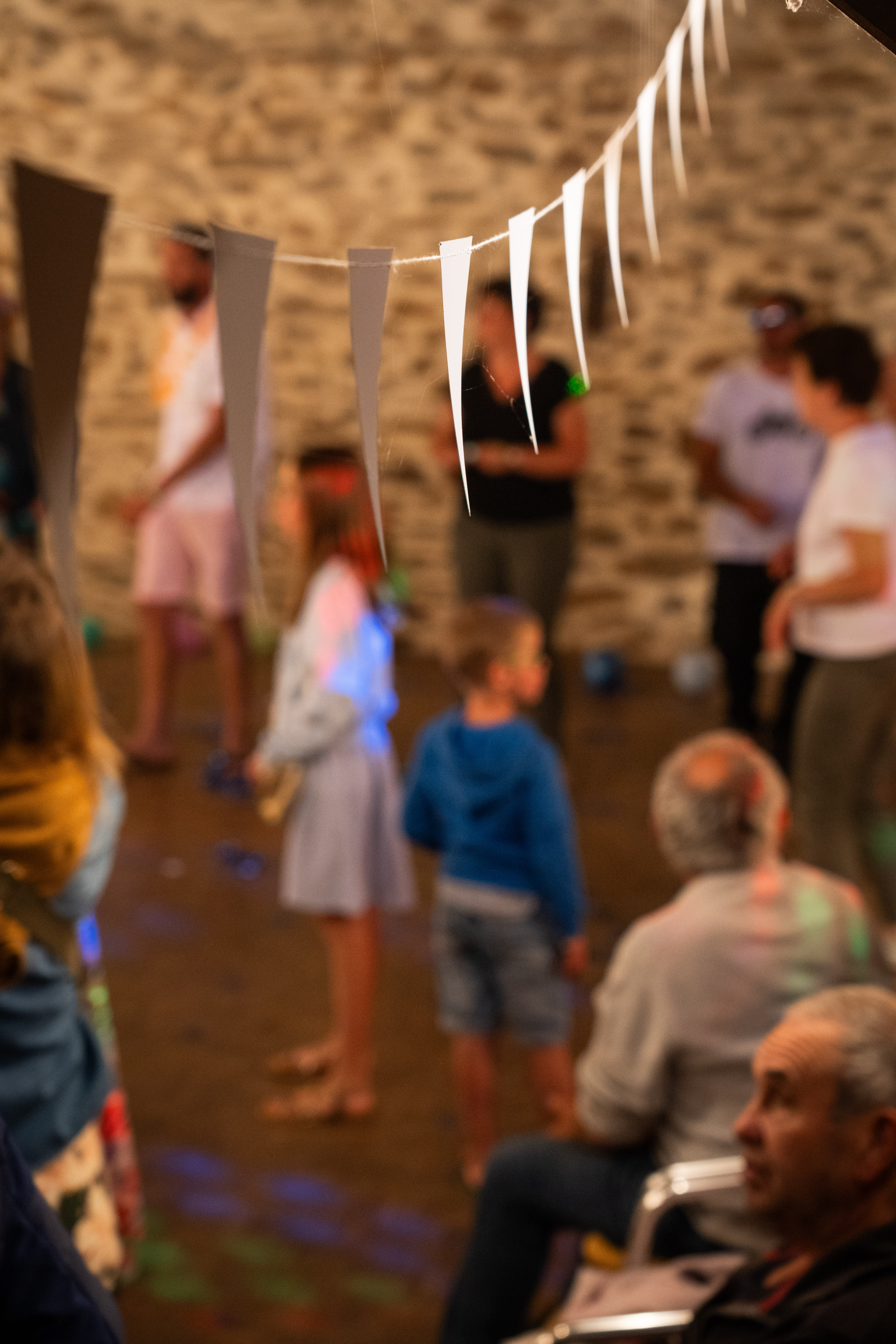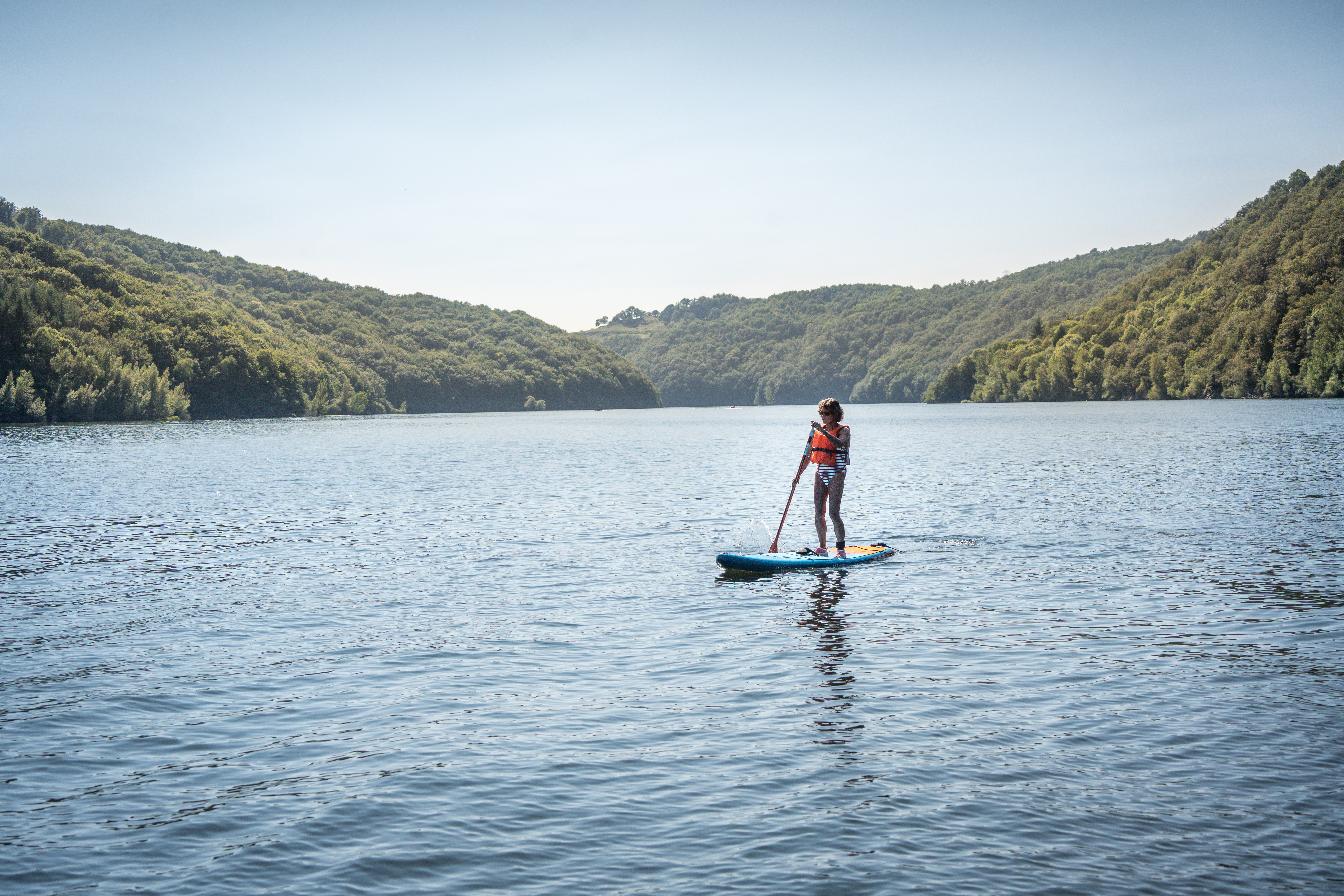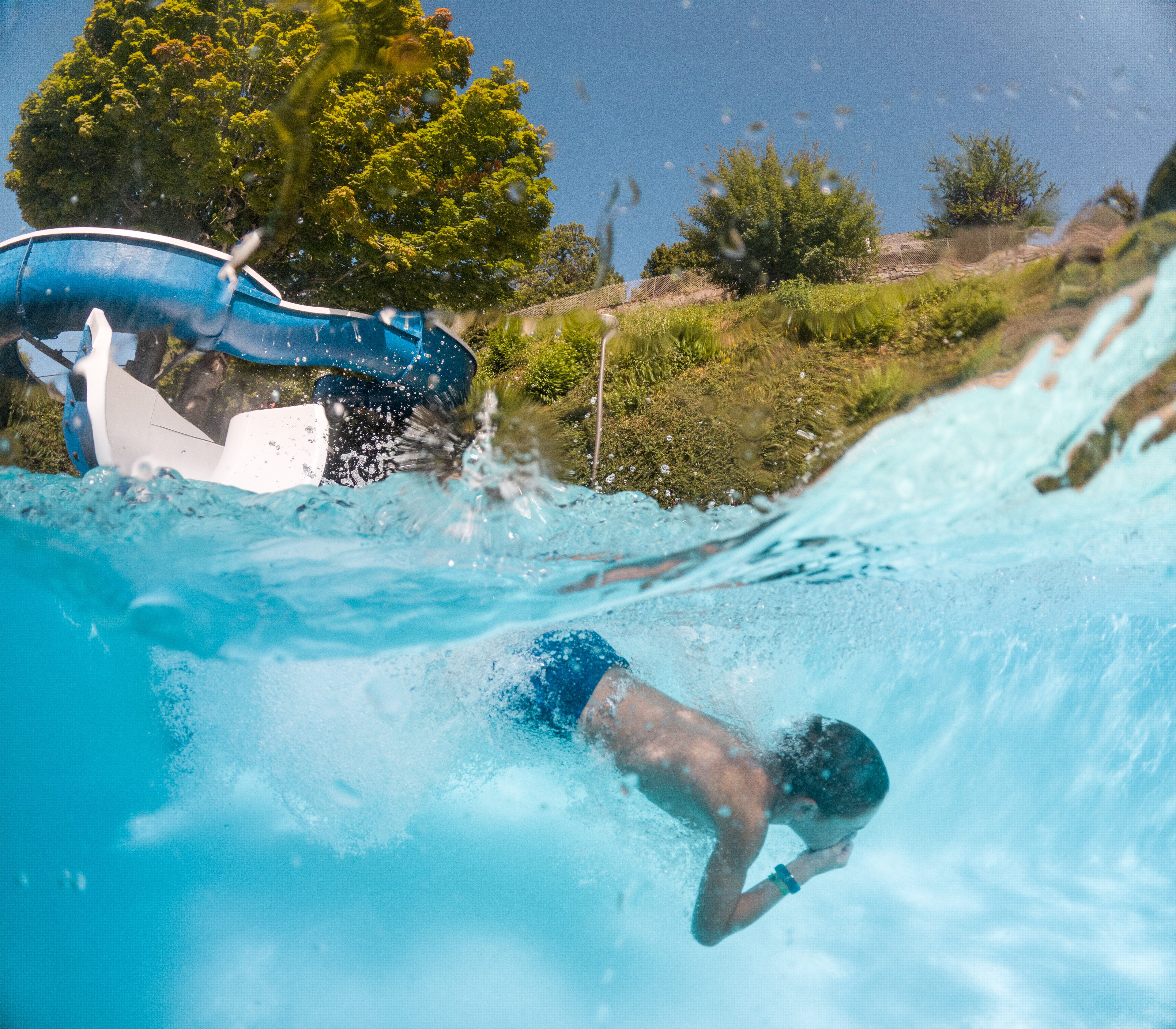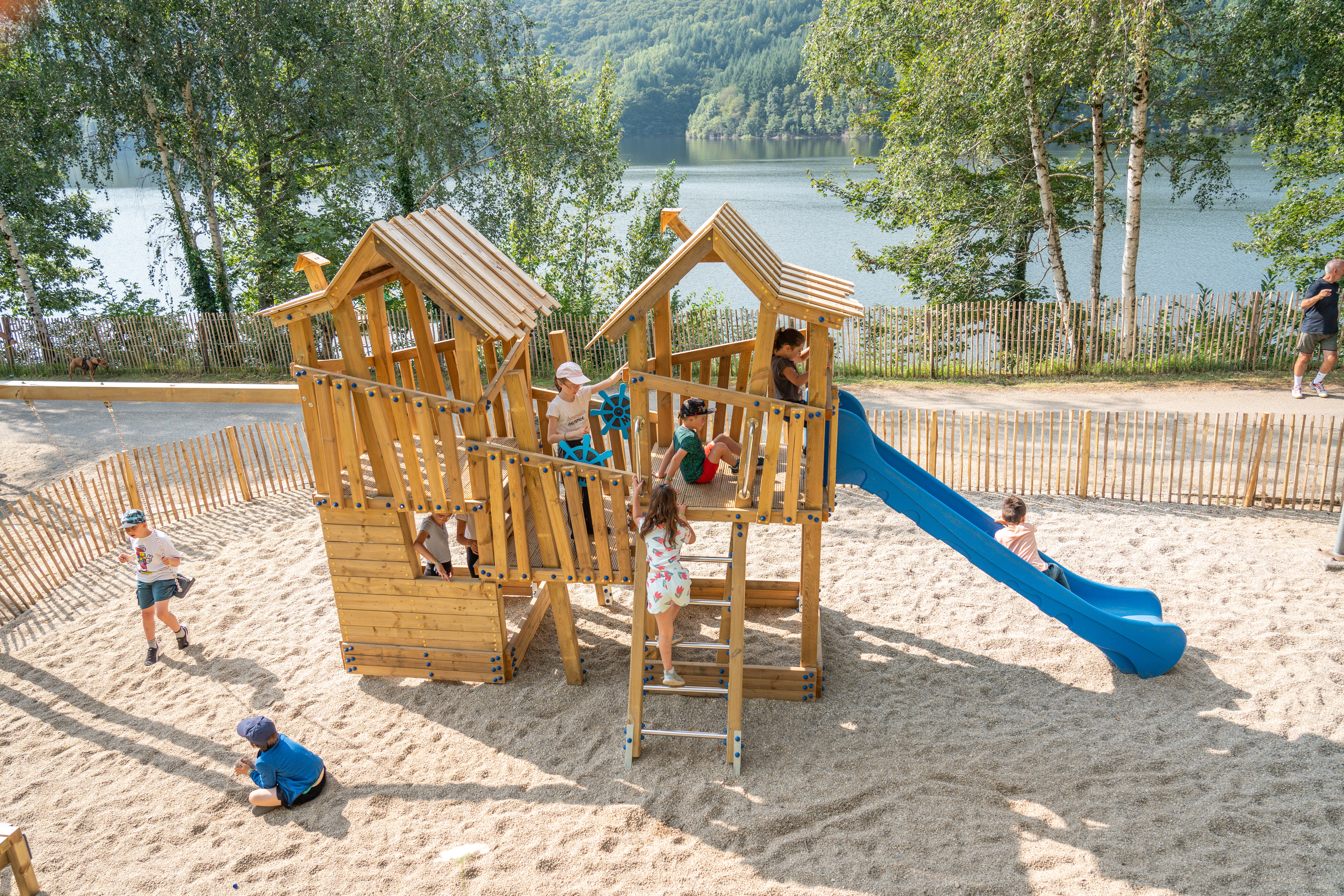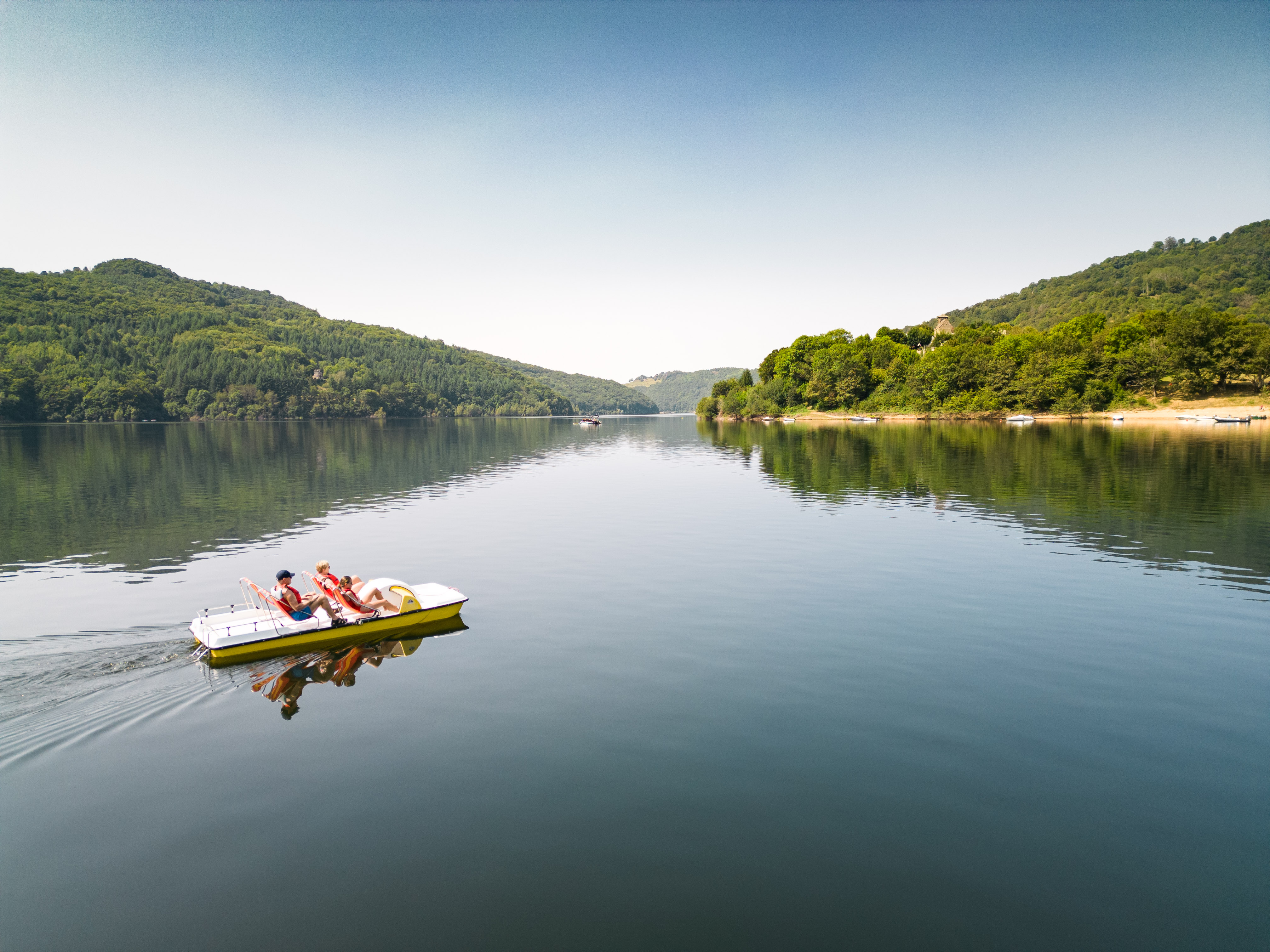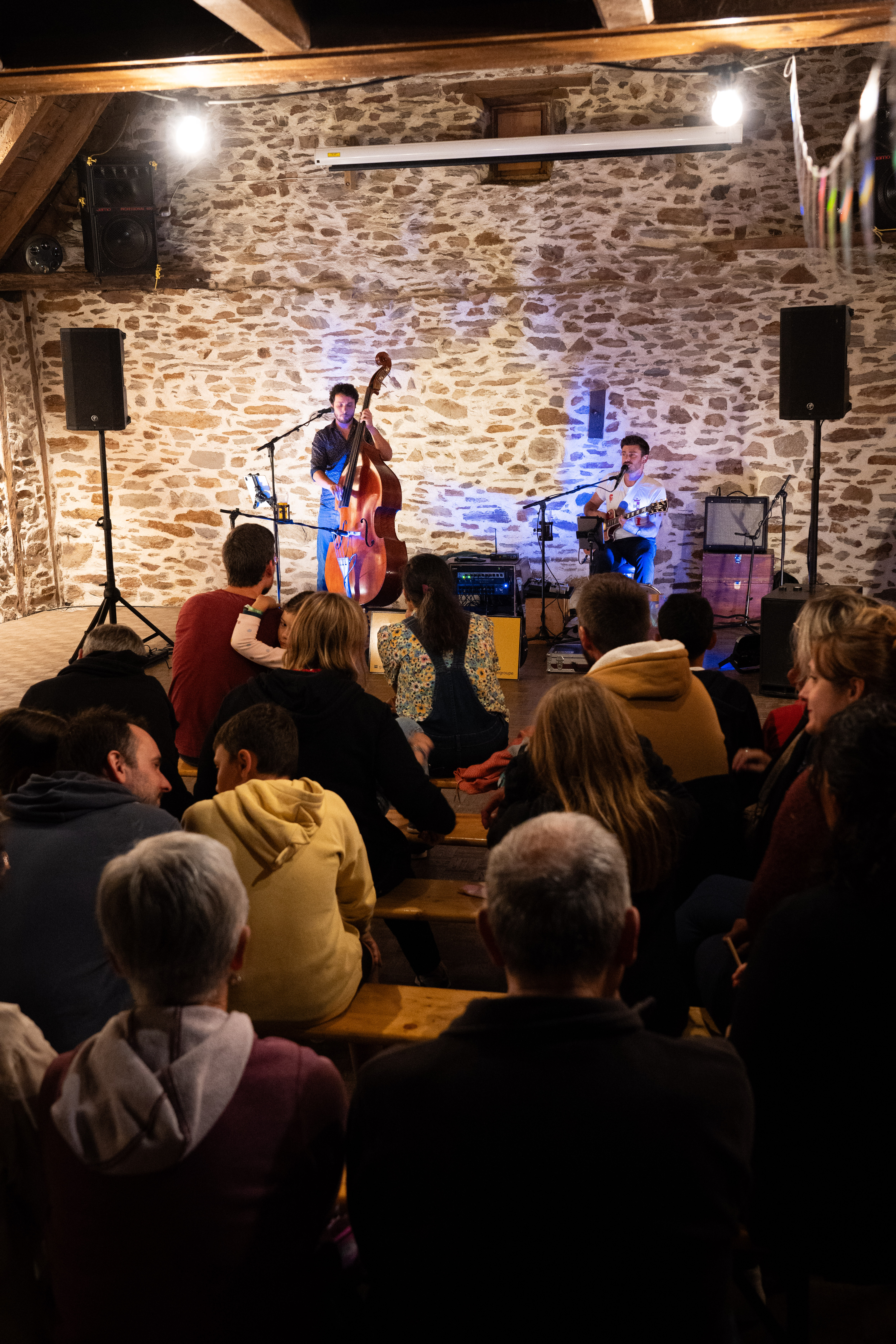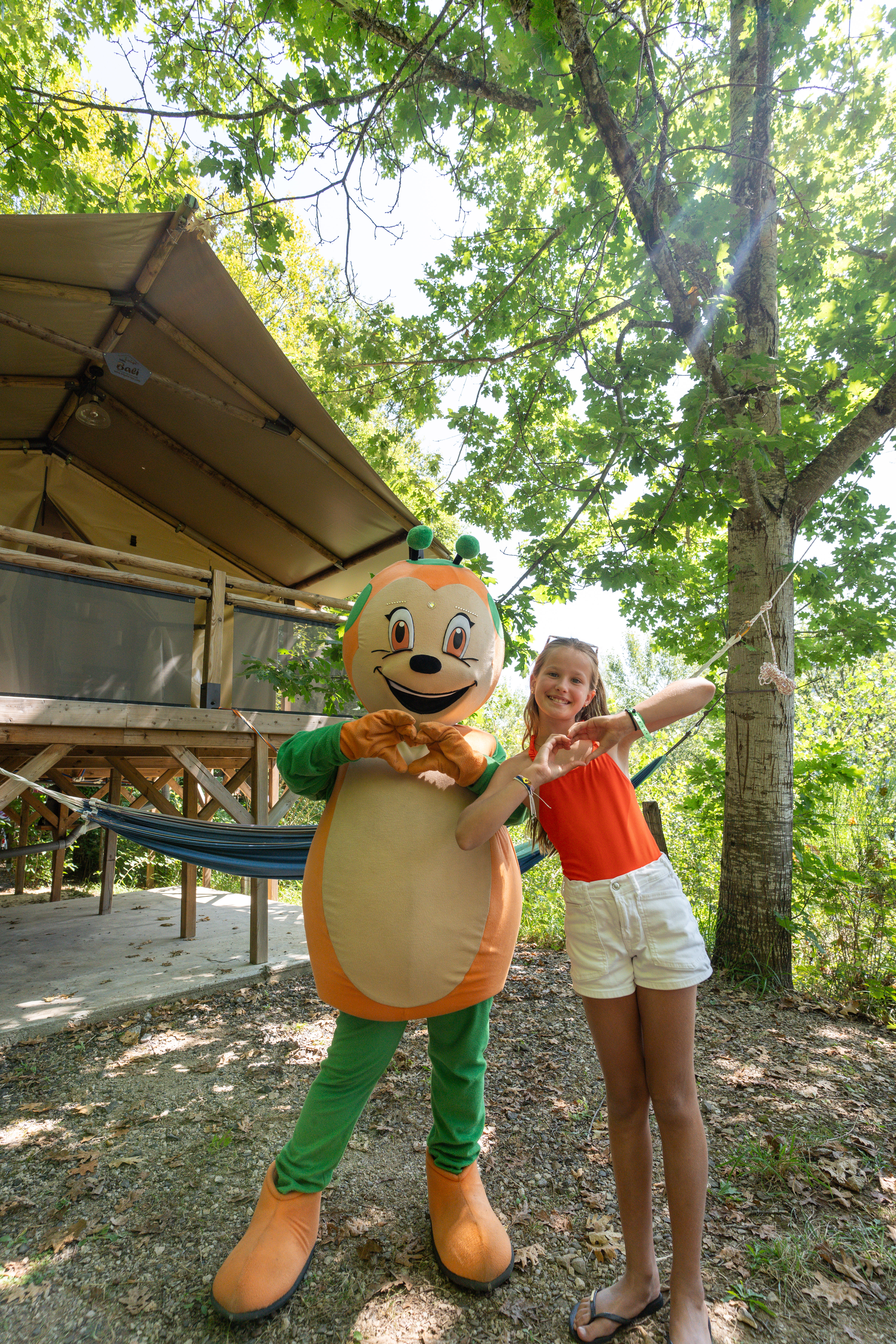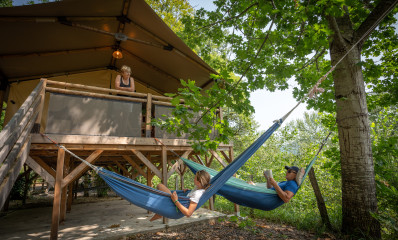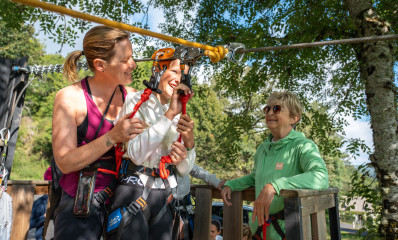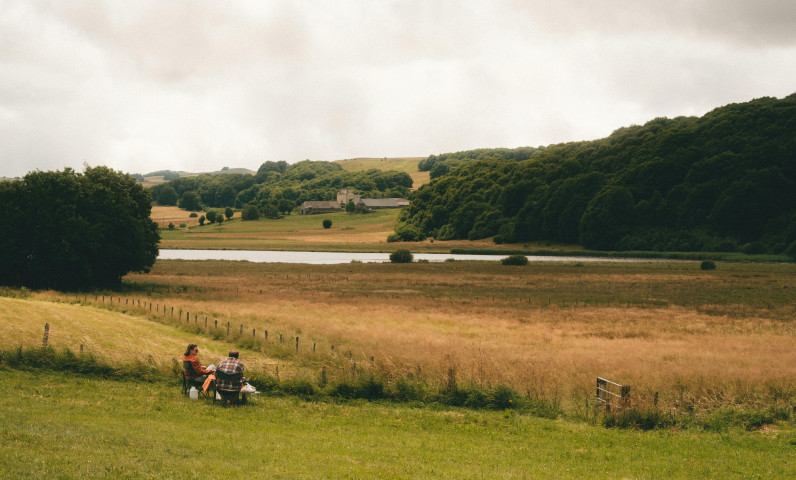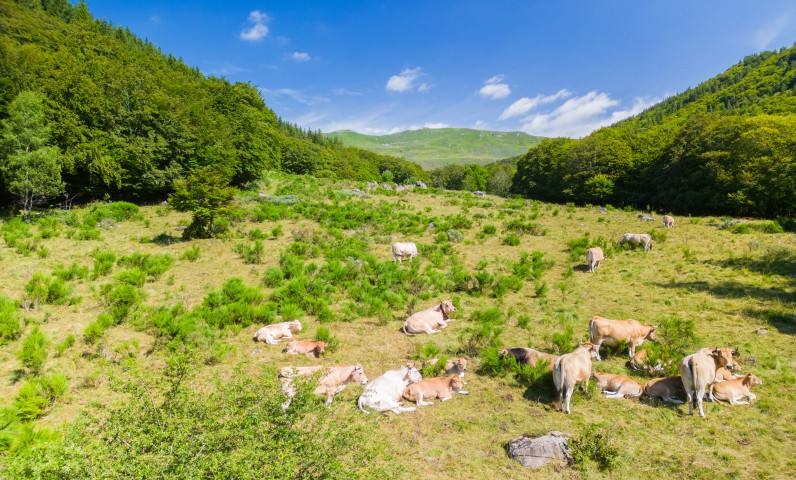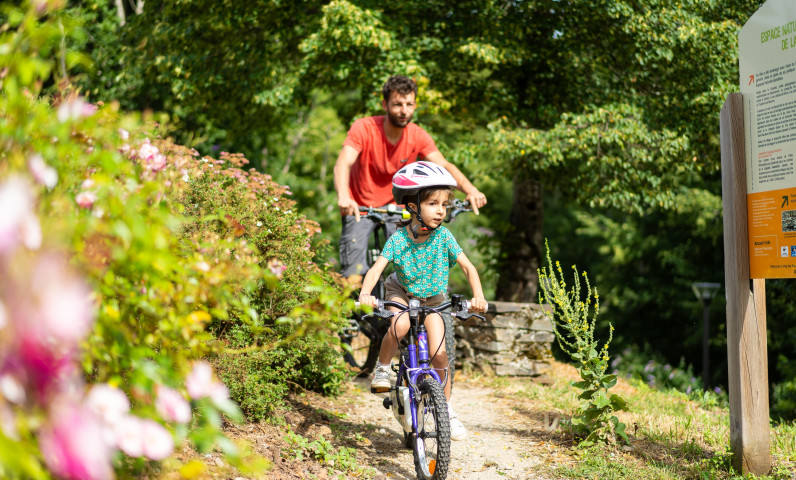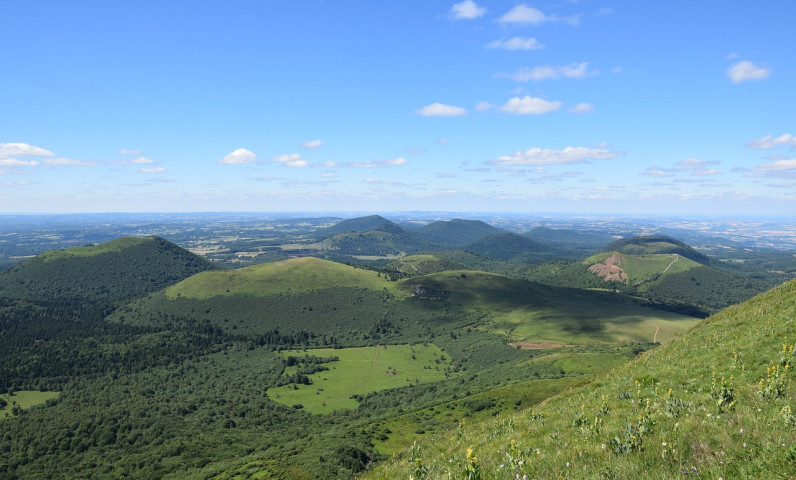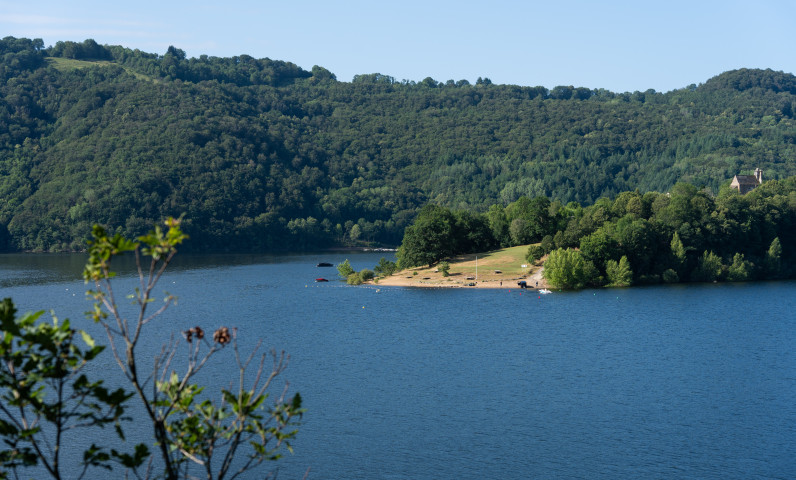THE AUBRAC - HIGH PLATEAU AND BORALDES
The Aubrac: A territory of exception between nature and traditions
The Aubrac is a plateau region stretching across Aveyron, Cantal, and Lozère. Rising between 1,000 and 1,500 meters in altitude, with its highest point at 1,469 m at the Signal de Mailhebiau, it stands out for its immensity and spectacular landscapes. Shaped by ancient volcanic activity and glaciers, its gentle reliefs combine endless pastures, winding rivers, and deep forests.
Exceptional Landscapes
Here, the horizon seems limitless. Mysterious peat bogs, shimmering lakes, green hills, and basalt columns highlight the geological richness of this land. Each season transforms the plateau: carpets of flowers in spring, vibrant greenery in summer, fiery colors in autumn, and pristine snow in winter. Aubrac is a paradise for photographers and lovers of wide-open spaces.
Remarkable Biodiversity
An open-air natural reserve, Aubrac is home to nearly 2,000 plant species, including rare flowers such as yellow gentian, orchids, Siberian ligularia, and carnivorous sundews. Its fauna is equally rich: deer, birds of prey, songbirds, and other emblematic species roam these vast expanses.
A Land of Rural Traditions
Beyond its natural wonders, Aubrac is a land shaped by livestock farming. The famous Aubrac cows, with their fawn-colored coats and dark-ringed eyes, embody the rural identity of the region. This open-air farming has given rise to a renowned gastronomy: Laguiole cheese, Aubrac raclette, exceptional meats, and regional specialties born from ancestral know-how.
A Natural Playground
Hiking, mountain biking, trail running, fishing, or simply contemplating the views… Aubrac can be explored at your own pace along its network of marked trails. Its rivers and lakes also offer peaceful stops, ideal for reconnecting with preserved nature.
Cultural and Spiritual Heritage
Picturesque villages, Romanesque churches, ancient mills, and traditional burons tell the story of a land where tradition and modernity coexist. Aubrac is also a spiritual landmark: since antiquity, routes have crossed the plateau, and later, pilgrims on the Way of St. James made it a key stage. Legend has it that the Flemish nobleman Adalard, escaping the dangers of this land, founded a hospice here in the 12th century: the Domerie d’Aubrac. From that time remain the Tour des Anglais, the Hospital, and the church of Notre-Dame-des-Pauvres, where the bell Maria, known as “the lost bell,” once guided travelers through the fog.
On the Way of St. James
The plateau is crossed by the Via Podiensis (GR® 65), listed as a UNESCO World Heritage site. The section between Nasbinals, Aubrac, and Saint-Chély-d’Aubrac is considered one of the most remarkable stages of the pilgrimage. Blending spirituality, endless landscapes, and unique heritage, this route offers an unforgettable experience.
The unmissable of L'Aubrac
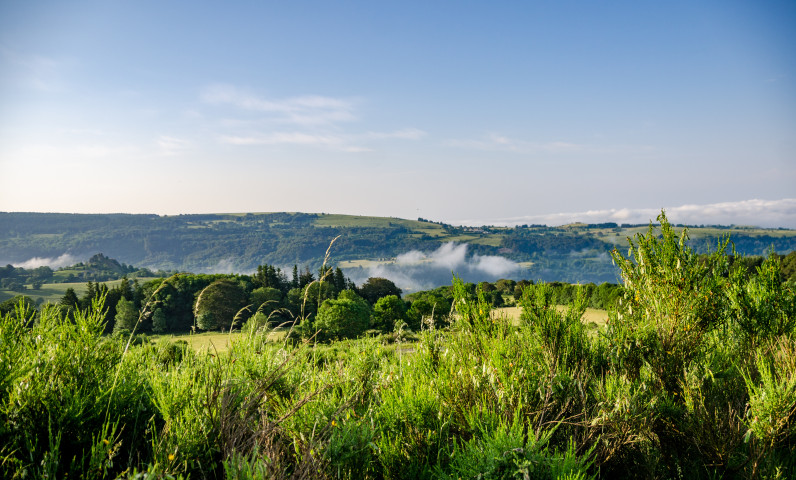
- Saint-Urcize
- Nasbinals
- Aubrac - Lake of the Monks
- Saint-Chély-d'Aubrac
- Must forest and waterfall
- Laguiole
- Cutlery
- Young Mountain Cheese Cooperatives
- Distillery Whisky
Saint-Urcize: A medieval village in the heart of the Aubrac
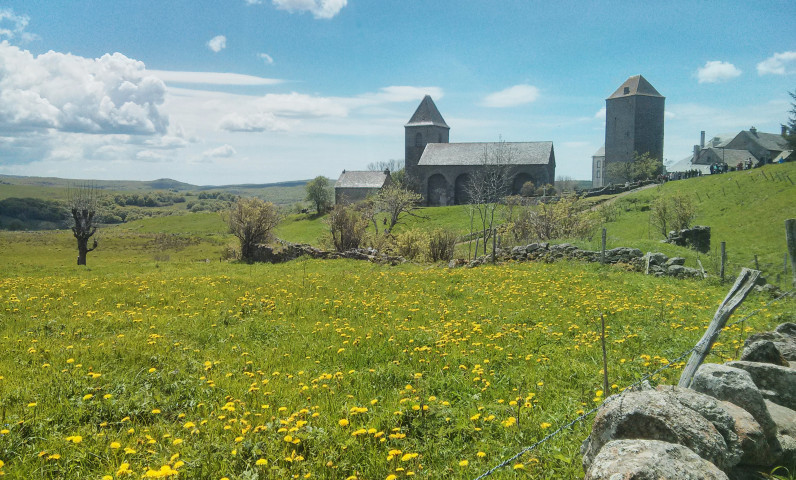
Perched at 1,100 meters above sea level, Saint-Urcize is a beautiful village of character nestled on the heights of the Aubrac. With its cobbled streets, typical stone houses, Romanesque church and breathtaking views, this village seduces all those who come to discover it. Its heritage, surrounding nature and peaceful atmosphere make it a must-see for lovers of history and authentic landscapes.
- A village with medieval charm
Saint-Urcize has preserved its architectural heritage and its atmosphere of yesteryear. Walking through its alleys, you will discover granite houses with roofs of lauze, testifying to the traditional know-how of the region. The village has a 12th century Romanesque church, classified as a Historic Monument, notable for its sober architecture and massive bell tower that dominates the landscape.
- An exceptional panorama on the Aubrac
From Saint-Urcize, several viewpoints offer a breathtaking view of the mountains of Aubrac and the surrounding valleys. The village is a true natural balcony, ideal to observe the raw beauty of the Aubrac plateaus, where pastures stretch as far as the eye can see and where the famous Aubrac cows graze.
- A starting point for hiking
Hiking enthusiasts will appreciate the trails that leave from Saint-Urcize and allow you to get into the great outdoors of the Aubrac. Marked routes lead to rivers, forests and ridges, offering a total immersion in this unspoilt nature. In winter, the village becomes a small paradise for cross-country skiing and snowshoeing.
An authentic and preserved village
Whether you are passionate about history, nature or simply in search of peace and serenity, Saint-Urcize is an ideal destination to discover the Aubrac in all its authenticity. Its peaceful atmosphere, medieval heritage and magnificent landscapes make it a jewel not to be missed.
Nasbinals: An emblematic village in the heart of the Aubrac
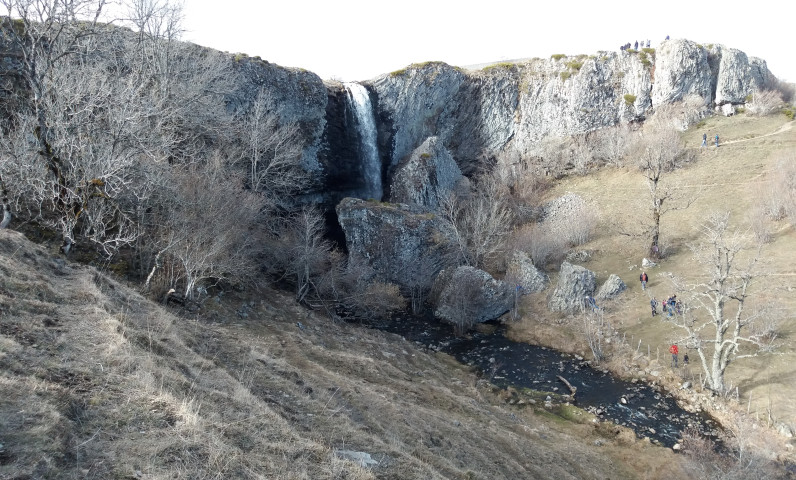
Located on the Aubrac plateau, at an altitude of almost 1,200 metres, Nasbinals is a typical village where history, traditions and grandiose landscapes meet. With its basalt stone houses, lauze roofs and remarkable Romanesque church, this village is a must stop for travelers in search of authenticity. Nestled on the Camino de Santiago (GR 65), Nasbinals is a privileged place for pilgrims and lovers of wild nature.
- A heritage preserved and steeped in history
Nasbinals has a rich architectural heritage, dominated by its 12th century Romanesque church, classified as a Historic Monument. Built in granite and basalt, it is a testament to the medieval past of the village and is one of the religious jewels of the Aubrac. Strolling through its cobbled streets, you will discover beautiful stone buildings, small fountains and a peaceful and timeless atmosphere. - An exceptional natural setting
Surrounded by endless meadows, crystal clear rivers and rolling mountains, Nasbinals is an ideal starting point to explore the unique landscapes of the Aubrac. Just a few kilometres away, the Déroc waterfall, with its impressive 30-metre waterfall, is a spectacular natural site not to be missed. The surrounding plateau, shaped by volcanism and glaciers, offers breathtaking panoramas and a total immersion in nature. - A crossroads for hiking
Nasbinals is a major stop on the Camino de Santiago and a starting point for many hikes through the Aubrac. Marked trails allow you to discover the traditional burons, the flocks where grazing, and wild moorlands typical of the region. In winter, the village also becomes a privileged spot for cross-country skiing and snowshoeing.
An authentic and lively village
Whether you are passing for a gourmet break, a hike, or simply to discover the soul of the Aubrac, Nasbinals will seduce you with its authentic character and its warm atmosphere. Between heritage, nature and traditions, this village is a real gateway to explore the magnificent landscapes of Aubrac.
Aubrac & Lake of Moines: A haven of peace in the heart of the great outdoors
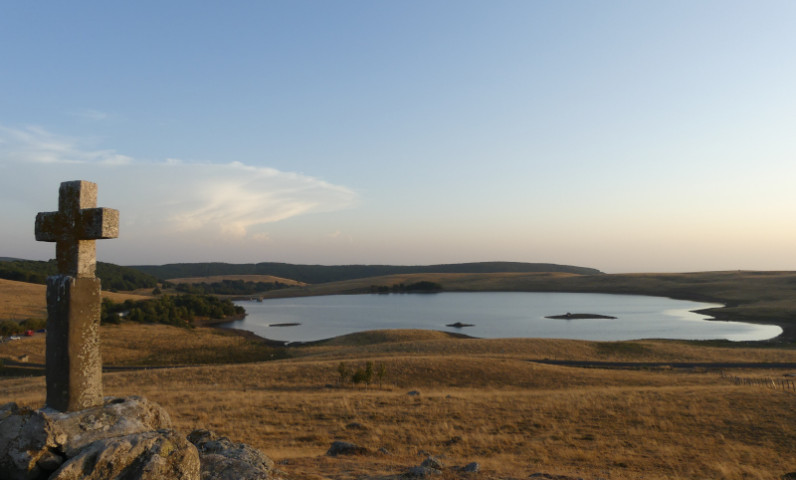
In the heart of the Aubrac plateau, the village of Aubrac and Lac des Moines offer an exceptional natural setting where history, grandiose landscapes and pastoral traditions meet. This emblematic place, located at more than 1,300 meters above sea level, seduces with its unique atmosphere, between vast high-altitude grasslands, traditional burons and infinite horizons. True crossroads of the Way of Saint-Jacques de Compostelle, Aubrac is an essential passage for pilgrims, hikers and lovers of preserved nature.
- A village marked by history
Aubrac is known for its Dômerie, a former monastery founded in the 12th century by Adalard of Flanders to welcome and protect pilgrims en route to Saint-Jacques-de-Compostelle. Today, there are only a few remains of this era, including the Tour des Anglais, which once watched over the village. The church of Notre-Dame-des-Pauvres, with its massive steeple and sober architecture, is a testimony to the spiritual and hospitable past of Aubrac.
- Le Lac des Moines: A natural setting
A few steps from the village, Lac des Moines is a small paradise nestled in the middle of the summer. Once used as a water reserve for the monks of Dômerie, this peaceful lake is now a place of relaxation and contemplation, where one can observe the surrounding nature and the play of light on the calm waters.
- An exceptional panorama
The Aubrac plateau offers breathtaking landscapes, changing with the seasons: in summer, the flowery meadows and Aubrac cows give a living postcard; in winter, the scenery turns into an unspoilt expanse, suitable for snowshoeing or Nordic skiing. Whether it is to immortalize the colors of the sunset, capture the mystical atmosphere of the morning mists, or simply savour the moment, Aubrac is a magical and timeless place.
- A starting point for hiking
Aubrac is a crossroads of trails, whether for walkers of the GR 65 (Chemin de Saint-Jacques), hikers to discover burons and estives, or bike and trail lovers. Several routes allow you to explore the surrounding valleys, secret gorges and panoramic passes of the region.
An emblematic place of the Aubrac
Between heritage, traditions and open spaces, Aubrac & le Lac des Moines are an invitation to disconnect and contemplation. Whether you are looking for wild nature, local history or a moment of serenity, this emblematic site promises an unforgettable experience in the heart of the Aubrac lands.
Saint-Chély-d'Aubrac: A charming village on the Chemin de Saint-Jacques
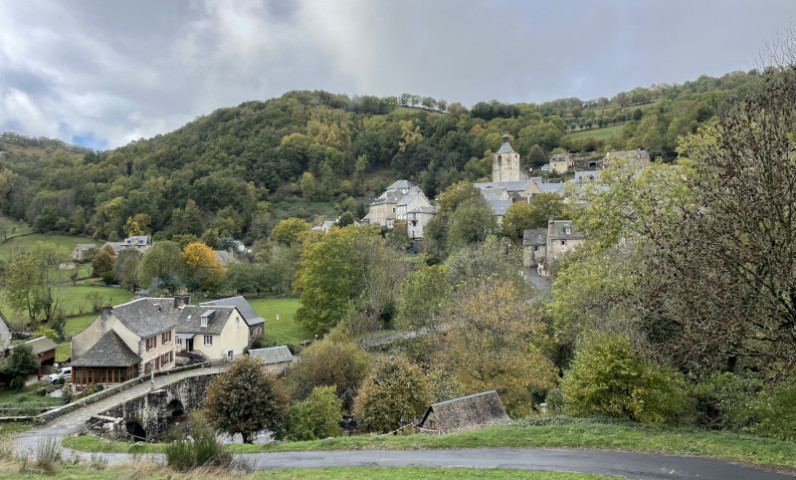
Nestled in the hollow of a green valley, Saint-Chély-d'Aubrac is a picturesque village where history, nature and pastoral traditions blend. Located on the Camino de Santiago (GR 65), it is an emblematic stop for pilgrims and travelers in search of authenticity. With its remarkable heritage, peaceful rivers and preserved environment, Saint-Chély-d'Aubrac is a true haven of peace nestled at the foot of the Aubrac plateau.
- A village with a rich heritage
Saint-Chély-d'Aubrac is marked by its medieval history and its strong link with the pilgrimage to Santiago de Compostela. The village is home to many architectural treasures, including the church of Saint-Éloi, classified as a Historic Monument, and especially the famous Pilgrims' Bridge, a magnificent 14th century Gothic bridge, listed as a UNESCO World Heritage Site. As you walk through the village, you will also discover beautiful stone houses, flowery alleys and a peaceful and welcoming atmosphere. - An exceptional natural setting
Surrounded by lush forests, rolling meadows and crystal clear rivers, Saint-Chély-d'Aubrac is a haven of unspoiled nature. The Boralde de Saint-Chély, which crosses the village, adds a touch of freshness and invites to contemplation and relaxation. In any season, the landscape evolves and offers a unique spectacle: golden tones in autumn, flowering pastures in spring, snow cover in winter. - A crossroads for hiking
Saint-Chély-d'Aubrac is an ideal starting point to explore the magnificent landscapes of the Aubrac. Whether you take the GR 65 up to the Aubrac, follow the marked trails through the summer or discover the surrounding forests and rivers, hiking and nature lovers will be satisfied.
An authentic and preserved village
Between history, nature and traditions, Saint-Chély-d'Aubrac embodies the soul of Aubrac. Whether you are a pilgrim, hiker or simply in search of serenity and discovery, this village will offer you an unforgettable experience. Here, time seems suspended, inviting to escape and contemplation in the heart of one of the most beautiful landscapes of the Massif Central.
Drill and waterfall of Devez: A cool setting in the heart of the Aubrac
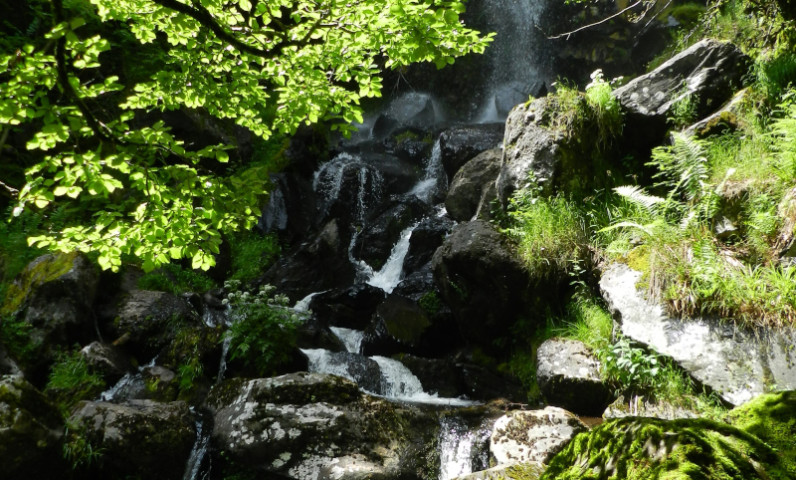
Nestled in the heart of the Aubrac, the forest of Le Devez is a true haven of greenery, where majestic trees and shady paths offer total immersion in a preserved nature. It is an ideal place for a refreshing walk, where you can hear the birds singing, smell the undergrowth and admire the wild beauty of this forest. But the jewel of this natural setting remains the Cascade du Devez, a beautiful and peaceful waterfall, which offers a breathtaking spectacle in any season.
- A forest of a thousand colors
The forest of Le Devez changes over the seasons, offering a constantly renewed landscape: paradise of freshness in summer, golden glow in autumn, fairy snow in winter and green rebirth in spring. Its paths wind between beech and fir trees, and lead to the waterfall, in an atmosphere of calm and serenity.
- The Cascade of Must: A hidden gem
Nestled in the heart of the forest, the Devez waterfall unfolds at the end of an enchanting path. The water flows gently over the rocks, creating a soothing atmosphere, ideal for a break in the middle of nature. This unspoilt natural spot is perfect to recharge your batteries, listen to the murmur of the water and enjoy the beneficial freshness of the place.
- An ideal site for nature lovers
Whether to photograph the magic of water in motion, the play of light between the trees, or simply enjoy the surrounding calm, the forest and the waterfall of Le Devez are a true haven of peace. With its mystical and bewitching atmosphere, it is a place that invites contemplation and escape.
- A course accessible to all
Easily accessible on foot, the trail leading to the Cascade du Devez is a pleasant walk, perfect for a family getaway, a relaxing break or an adventure in the heart of the wild nature of the Aubrac.
A haven of freshness and serenity
For an enchanted parenthesis between forest and waterfall, the forest of Le Devez is an ideal destination. Whether you are in search of freshness in summer, fairy landscapes in winter, or a relaxing walk, this site promises you a moment out of time, as close to the unspoiled nature of the Aubrac.
The discovery of Laguiole
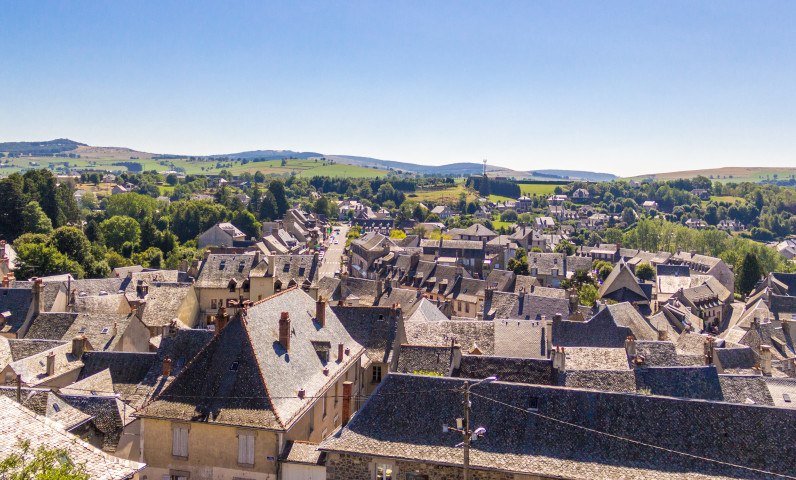
Laguiole: between traditions, know-how and open spaces
Perched on the Aubrac plateau, Laguiole is an emblematic village where history, craftsmanship and nature meet to offer a unique experience. Renowned worldwide for its exceptional knives, but also for its gastronomy and majestic landscapes, Laguiole embodies the soul of authentic Aubrac. Whether you are passionate about crafts, lovers of open spaces or curious about gastronomic discoveries, Laguiole is a must.
- Recognized craftsmanship
Laguiole is inseparable from its famous knife, a symbol of elegance and tradition. Crafted with craftsmanship and precision, it perpetuates a centuries-old heritage. Many cutlery and workshops in the village open their doors to visitors to show them the stages of manufacture of this exceptional object, hand-crafted by passionate craftsmen.
- A terroir and an exceptional gastronomy
Another pride of Laguiole: its cheese! The Laguiole AOP, produced in altitude burons and carefully aged, is a reference of local gastronomy. It is impossible to visit Laguiole without tasting an aligot, this gourmet specialty based on mashed potatoes and fresh tome, which alone embodies all the generosity of the Aubrac.
- A breathtaking natural setting
Laguiole is surrounded by vast summer pastures, where the famous Aubrac cows graze, and offers a spectacular natural setting. The village is an ideal starting point for exploring the wild moors, rolling mountains and secret valleys of the Aubrac. In winter, the ski resort of Laguiole attracts lovers of snow sports and snowshoeing, while in summer, hikers can walk the many marked trails.
- A village full of charm
With its stone houses and lauze roofs, lively streets and small craft shops, Laguiole seduces by its authenticity. Among the must-see sites, we find the famous statue of the bull of Laguiole, true emblem of the village, which dominates the central square. Nearby, the church of Saint-Matthieu, with its characteristic bell tower, testifies to the local history.
- A crossing point between culture and nature
Whether it is to visit a cutlery, taste a typical dish, explore the open spaces of the Aubrac or simply stroll through its lively streets, Laguiole is an essential stopover for those who want to discover the soul of this unique region.
Laguiole, a concentrate of Aubrac
Between traditions, know-how and grandiose landscapes, Laguiole is much more than a simple village: it is a real invitation to discovery. Here, each alley, each workshop and each landscape tells a story, that of an authentic territory proud of its roots.
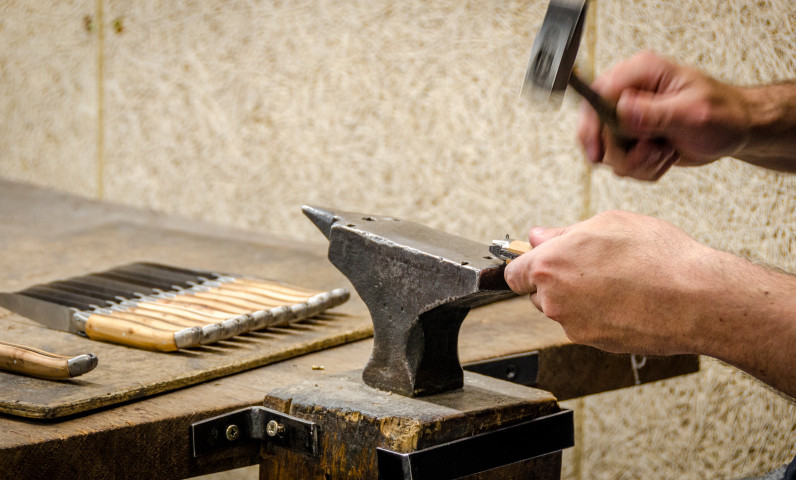
Laguiole & his Cutlery: The excellence of an ancestral know-how
Symbol of exceptional craftsmanship, the Laguiole knife is much more than a simple tool: it embodies a history, a terroir and a unique know-how transmitted from generation to generation. In the village of Laguiole, cutlery perpetuates this centuries-old tradition, by hand shaping knives of impeccable quality, recognized throughout the world.
- A knife full of history
Born at the beginning of the 19th century, the knife of Laguiole finds its origins in the capuchadou, a traditional knife of the shepherds of the Aubrac, and in the Spanish navaja, brought by pilgrims from Saint-Jacques-de-Compostelle. With its tapered blade, sculpted handle and famous fly (bee or other motif worked on the spring of the knife), it has become a true emblem of French excellence.
- A craft manufacturing in the rules of art
In Laguiole, several cutlery and workshops perpetuate the traditional manufacture of knives. Each piece is assembled by hand by passionate craftsmen, who work noble materials such as precious wood, horn or mammoth ivory to create unique and refined knives. From the forgage of the blade to the polishing of the handle, each stage of manufacture respects precise and meticulous gestures, guaranteeing a knife that is at the same time aesthetic, robust and functional.
- Visit the cutlery of Laguiole
Immerse yourself in the world of cutlery from Laguiole is to discover an art of manual work, where each knife tells a story and unique know-how. Several houses open their doors to visitors, offering demonstrations of manufacturing, explanations on the techniques used, and the possibility to buy or customize your own knife. Among the iconic cutlery items are:
- La Coutellerie Honoré Durand: a family business that perpetuates traditional know-how and offers guided tours of its workshop.
- La Forge de Laguiole: a renowned cutlery that combines craftsmanship and contemporary design to create exceptional pieces.
- Local cutlery & blacksmiths: passionate craftsmen who shape custom knives in respect of tradition.
An exceptional souvenir
To buy an authentic Laguiole knife is to own an exceptional object, designed to last a lifetime. True heritage of the Aubrac terroir, it is often passed on from generation to generation, becoming a precious gift and full of meaning.
Laguiole, capital of the knife
With its living workshops, passionate craftsmen and historical heritage, Laguiole is much more than a simple village: it is a land of tradition and excellence, where the knife remains a timeless symbol of craftsmanship and elegance.
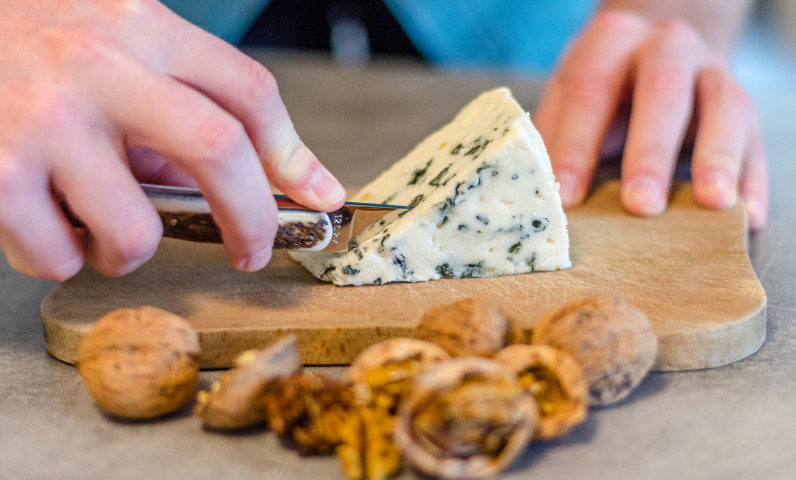
Laguiole & the cooperative Young Mountain: At the heart of taste and cheese traditions
It is impossible to mention Laguiole without mentioning its exceptional cheese and its famous aligot, two gastronomic treasures born in the highlands of Aubrac. For more than 60 years, the Coopérative Jeune Montagne has perpetuated the traditional know-how of the buronniers, guaranteeing cheeses of irreproachable quality and a strong link with the Aubrac terroir.
- Le Laguiole AOP: An exceptional cheese
Produced from the raw and whole milk of Aubrac and Simmental cows, Laguiole AOP cheese is a real institution. Matured for at least 4 months in the cooperative’s cellars, it develops powerful and refined aromas, both fruity and persistent, which make it a must on gastronomic tables. Its soft and creamy paste, its golden crust and its typical taste make it a true ambassador of the Aubrac.
- L'aligot: The emblematic recipe of Aubrac
Friendly and generous dish, aligot is an essential specialty born in the burons of Aubrac. Prepared with fresh tome de Laguiole, it is distinguished by its flowing and melting texture, which goes perfectly with local meats or can simply be tasted with a spoon. La Coopérative Jeune Montagne takes care to preserve the traditional recipe, selecting first quality ingredients for an aligot faithful to the flavors of yesteryear.
- An immersion in cheese-making skills
- The Coopérative Jeune Montagne, located in Laguiole, opens its doors to visitors for a fascinating dive into the world of cheese. You will discover:
- The secrets of making Laguiole AOP and fresh tome through explanations on the stages of milk processing.
- Demonstrations of spinning the aligot, where we learn to obtain the perfect texture and master the art of "spinning ribbon".
- A gourmet shop where you can buy Laguiole AOP cheese, fresh tome, butter and local specialties.
- A terroir to taste
Whether on a guided tour, during an on-site tasting or by buying their products directly, the Coopérative Jeune Montagne immerses you in the heart of a unique gastronomic heritage. A must for all gourmands and curious, eager to taste the pure Aubrac.
A know-how at the service of the terroir
Thanks to its values of quality, authenticity and respect for traditions, the Young Mountain Cooperative plays a key role in preserving the cheese heritage of the Aubrac. A visit to Laguiole would not be complete without a gourmet stopover in this must-see establishment.
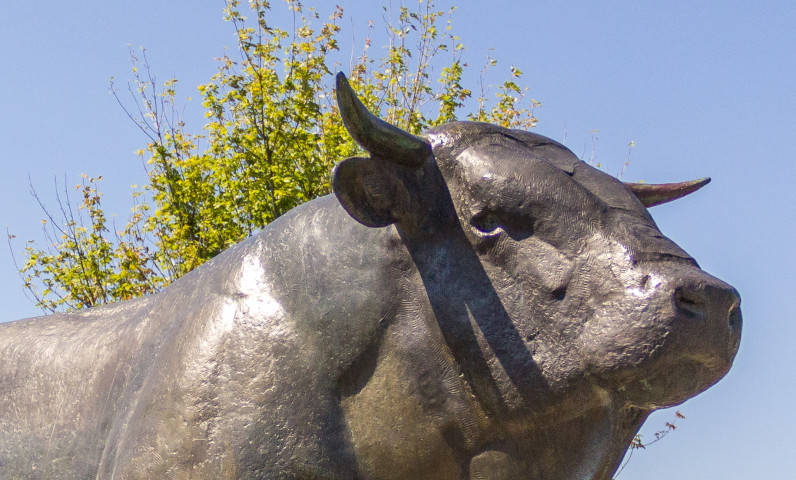
Laguiole & the Whisky Distillery: A know-how of exception in the heart of the Aubrac
In the heart of the Aubrac, where wild and preserved nature meets the authenticity of traditions, the Laguiole Whisky Distillery is one of the jewels of the region. Perpetuating an artisanal know-how, the distillery elaborates whiskies of character, where each stage of production pays homage to the unique terroir of the Aubrac. Between tradition and innovation, this distillery offers a true sensory journey, anchored in the lands of Aubrac.
- A whisky that reflects the terroir of Aubrac
Laguiole whisky is an exceptional drink, produced with quality local ingredients. The malt comes from cereals grown on the Aubrac plateau, while the water used in the manufacture is drawn from the pure springs of the surrounding mountains. This whisky therefore reflects the purity and authenticity of the country, by absorbing the aromas and flavors characteristic of the Massif Central.
- A traditional distillation and unique aging
The Laguiole Whisky Distillery uses traditional distillation methods. The distillate is aged in oak casks containing local wines or spirits, which gives the Laguiole whisky a unique character, both sweet and complex. The influence of wood and climatic conditions of the region brings woody aromas, smoky and spicy notes, which make it a real specialty of the terroir.
- A high-end whisky, distilled for excellence
The distillery produces top quality whiskies, characterized by an exceptional aromatic richness and a depth of flavor that will appeal to the most demanding amateurs. Each cuvée is the result of several years of patience, a slow and meticulous process that allows the whisky to develop subtle aromas, and reveal all its complexity over time.
- Visit the distillery and discover its secrets
During your visit to the Laguiole Whisky Distillery, you will have the opportunity to discover the process of making whiskey through exciting guided tours. You can:
- Observe the distillation live, discover the aging techniques in oak barrels and understand the secrets of making this unique spirit.
- Taste different cuvées of Laguiole whisky, accompanied by detailed explanations on the aromatic profiles and specificities of each variety.
- Visit the shop, where you can buy bottles of Laguiole whisky, products and accessories to complete your collection or offer an exceptional gift.
A whisky rooted in its terroir
The Laguiole Whisky Distillery is much more than a simple producer of spirits: it is a true ambassador of the Aubrac terroir. By combining tradition, know-how and innovation, the distillery offers an exceptional product that embodies the spirit of the Aubrac, with its wild landscapes, clean air and rich heritage.
The perfect spot for your photos
From the forecourt of the church of Vines, a magnificent view is offered to visitors: a breathtaking panorama on the majestic gorges of the Truyère and the imposing peaks of the Monts du Cantal. This exceptional setting, where nature and heritage meet harmoniously, is an ideal photo spot to immortalize the wild beauty of the region
Circuit Discovery of the Aubrac
Departure: Laguiole
Start your journey in this emblematic village of the Aubrac, famous for its artisanal knives and Laguiole cheese. Take a tour of the cheese cooperative to discover the secrets of cheese making and stroll through the village’s alleys.
Direction: Le Buron de la Truque
- Take a break in a traditional buron, these old shepherds' huts transformed into inns where you can taste the aligot, the must-have dish of Aubrac.
The Aubrac Plateau - Join the immensity of the plateau in the direction of the village of Aubrac, where the landscapes extend as far as the eye can see between rolling meadows, dry stone walls and Aubrac cows. Stop at the Domerie d'Aubrac, a former monastery that once welcomed pilgrims on the Way of Saint James.
Belvedere du Roc de Campiels - Take a little height with this exceptional view on the gorges of the Boralde, a wild panorama that perfectly illustrates the diversity of the landscapes of the Aubrac.
Nasbinals - Cross the border between Aveyron and Lozère to reach Nasbinals, a charming granite village, known for its 12th century Romanesque church. It is also a nice stop to taste local products in one of the small restaurants of the village.
Cascade du Déroc - A few minutes from Nasbinals, discover this spectacular waterfall, which falls almost 30 meters in a basalt cave. A must-see site for lovers of nature and photography.
Saint-Urcize - Head to Saint-Urcize, a pretty hilltop village that offers a magnificent view of the mountains of Aubrac. This medieval village has a remarkable church and small streets full of charm.
Back to Laguiole
Finish your tour by taking the road back to Laguiole, enjoying the last panoramas of the day on the wide open spaces of the Aubrac.
This tour allows you to discover the essence of the Aubrac, between picturesque villages, exceptional panoramas and local traditions
